Non-Toxic Sunscreen Guide
Written by:
Maia James
04/17/2024
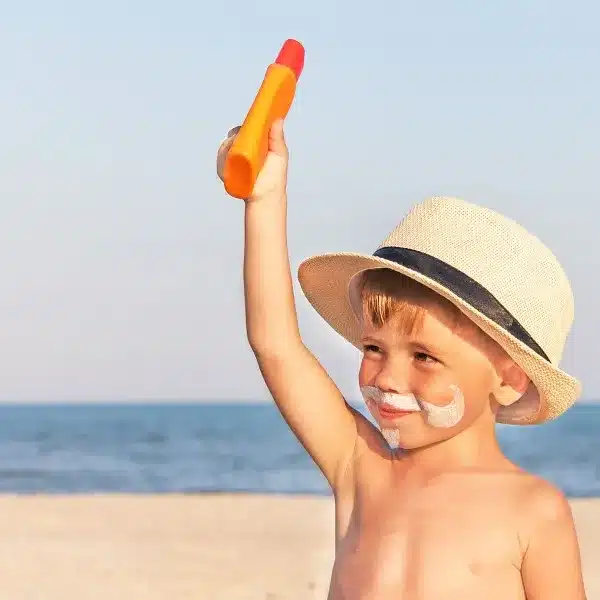
Updated: 04/19/2024
Looking for a different guide? Browse them all HERE.
I know you’re here to find the best non-toxic sunscreen. But, I actually believe we should let our kids (and ourselves) experience small amounts of sunlight on bare skin. Vitamin D is important!
Of course, it’s not always possible to get just ten or fifteen minutes of sun each day. Fortunately there are a bunch of brands of non-toxic sunscreen that you can feel good about using. This guide will help you understand the problems with most brands of sun protection lotions, sprays, and creams–and help you pick the best non-toxic sunscreen for your family.
Let’s get into it.
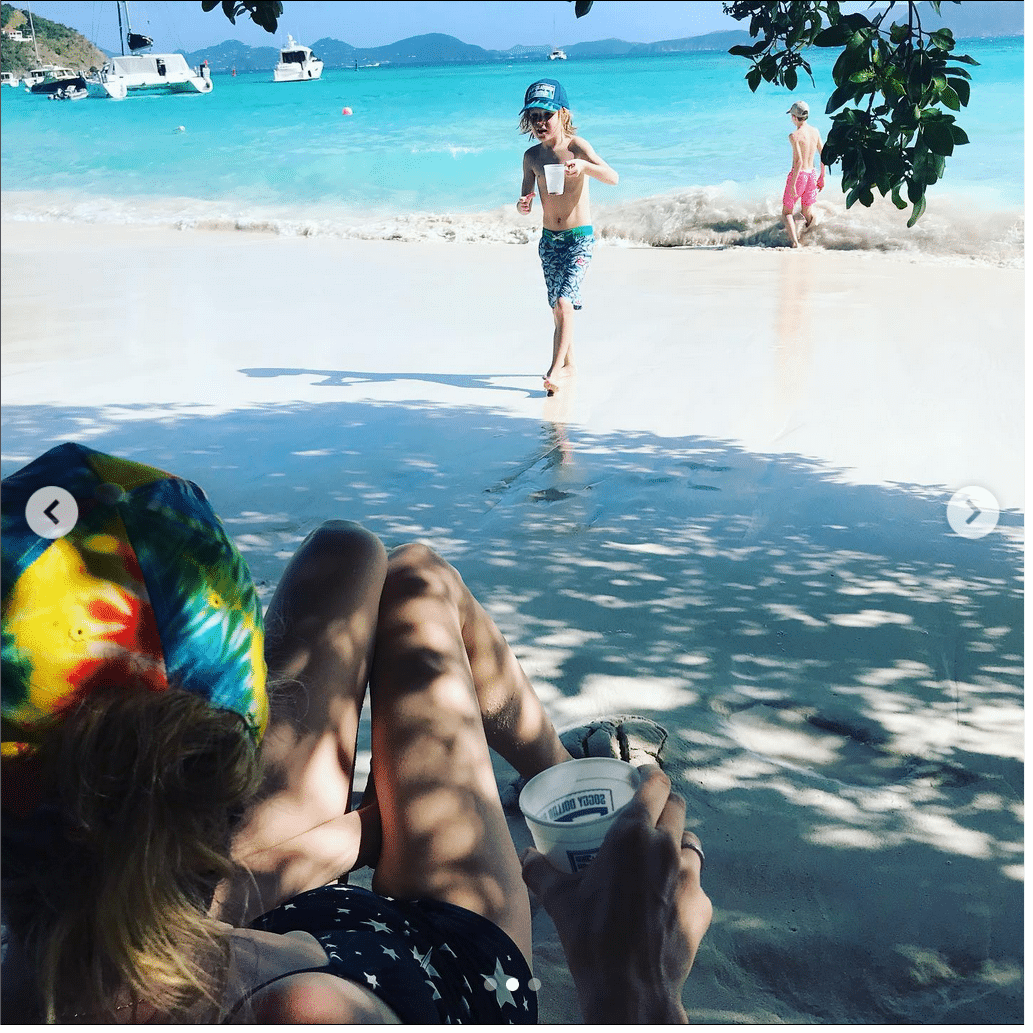
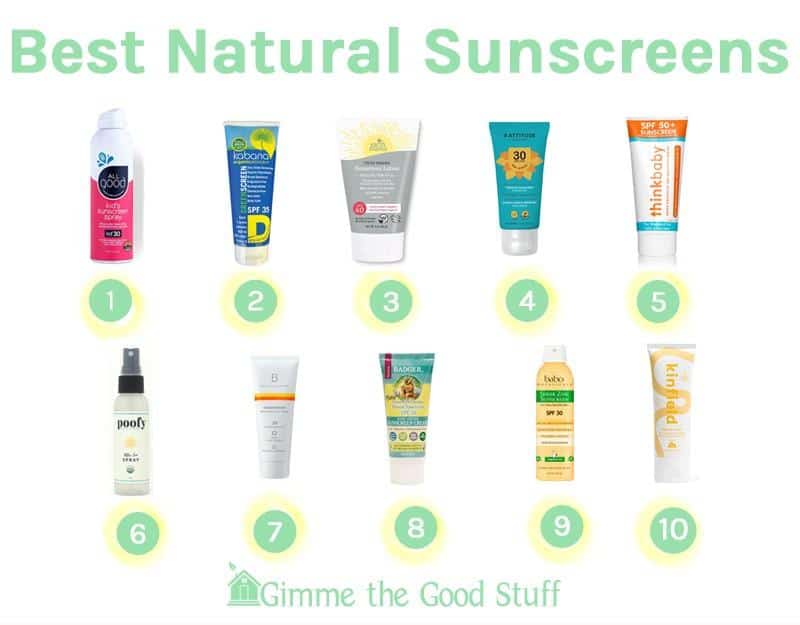
1. All Good/ 2. Kabana/ 3. Earth Mama/ 4. Attitude / 5. Thinkbaby/ 6. Poofy Organics/ 7. Beautycounter/ 8. Badger/ 9. Babo Botanicals / 10. Kinfield
Why Use Non-Toxic Sunscreen?
Conventional sunscreen is loaded with chemicals, including parabens, well-established carcinogens, and oxybenzone, an endocrine disruptor that may generate free radicals when exposed to ultraviolet light.
Some researchers even suspect oxybenzone to be the hidden cause of the increase in melanoma, although most studies have found no such link. Still, add this potential risk to the risk of vitamin D deficiencies, and standard sun safety doesn’t feel so safe!
In addition to the active ingredients, sunscreen also contains a number of inactive ingredients, some of which are concerning. The non-toxic sunscreens we call Best Stuff in this guide are free of the Bad Stuff we talk about in our other skincare Guides–synthetic fragrances, PEG chemicals, propylene glycol, alumina, etc.
Note: These days, almost all sunscreen is free of PABA (para-aminobenzoic acid), and so this once ubiquitous—and possibly carcinogenic—sunblock ingredient is no longer a concern.
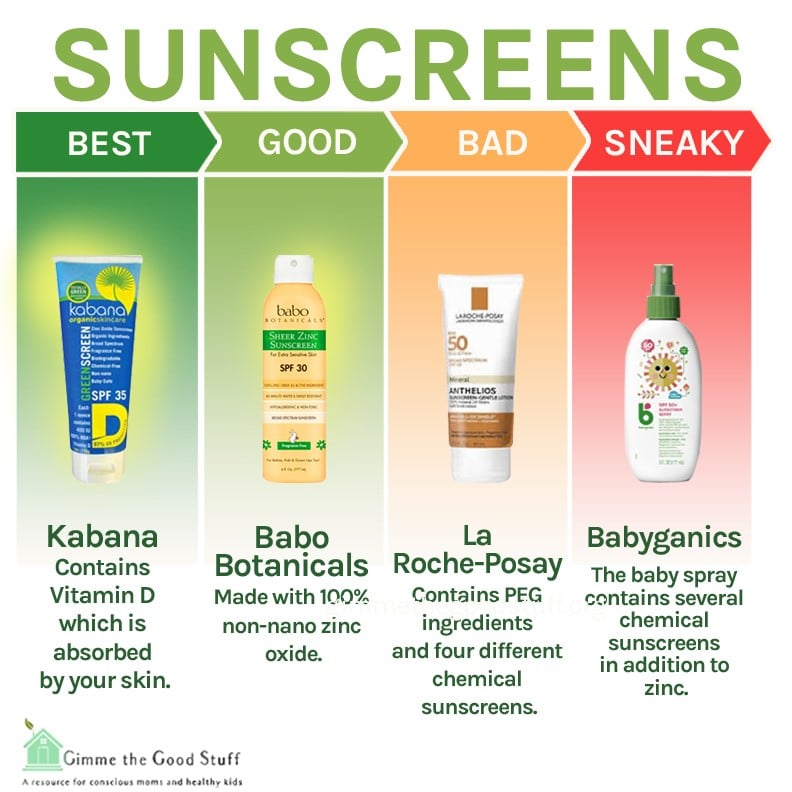
What Are the Ingredients to Avoid in Sunscreen?
I encourage you to choose sunscreens that use only mineral ingredients (more on these below), but you should know that not all chemical sunscreens are equally bad. Here is a run-down of most common:
⚠️ Avobenzone. We consider this Okay Stuff. If you’re going for chemical instead if mineral sunscreen, look for one with avobenzone as the primary active ingredient.
⚠️Octisalate and octocrylene. These are both Okay Stuff, as neither comes with a significant risk to human health. Still, all things considered, I would choose a sunscreen with avobenzone over one with either of these.
❌ Oxybenzone. This is the really bad sunscreen ingredient. It causes cellular damage and endocrine disruption. The good news: even Coppertone is free of oxybenzone now! That’s not because of any new regulations (sadly), but rather thanks to consumer demand–way to go, you guys!
❌Homosalate. This is also very Bad Stuff. The European Commission proposes a concentration limit of 1.4 percent for homosalate. Unfortunately, U.S. sunscreens are currently allowed to have up to 15%. Avoid any sun protection product that has homosalate in it.
It’s worth noting that ALL of these ingredients are absorbed into the body after one use, and can still be detected in the blood weeks after their use, according to studies published by the FDA. Moreover, these ingredients are disastrous to the environment, putting coral reefs in danger of extinction.
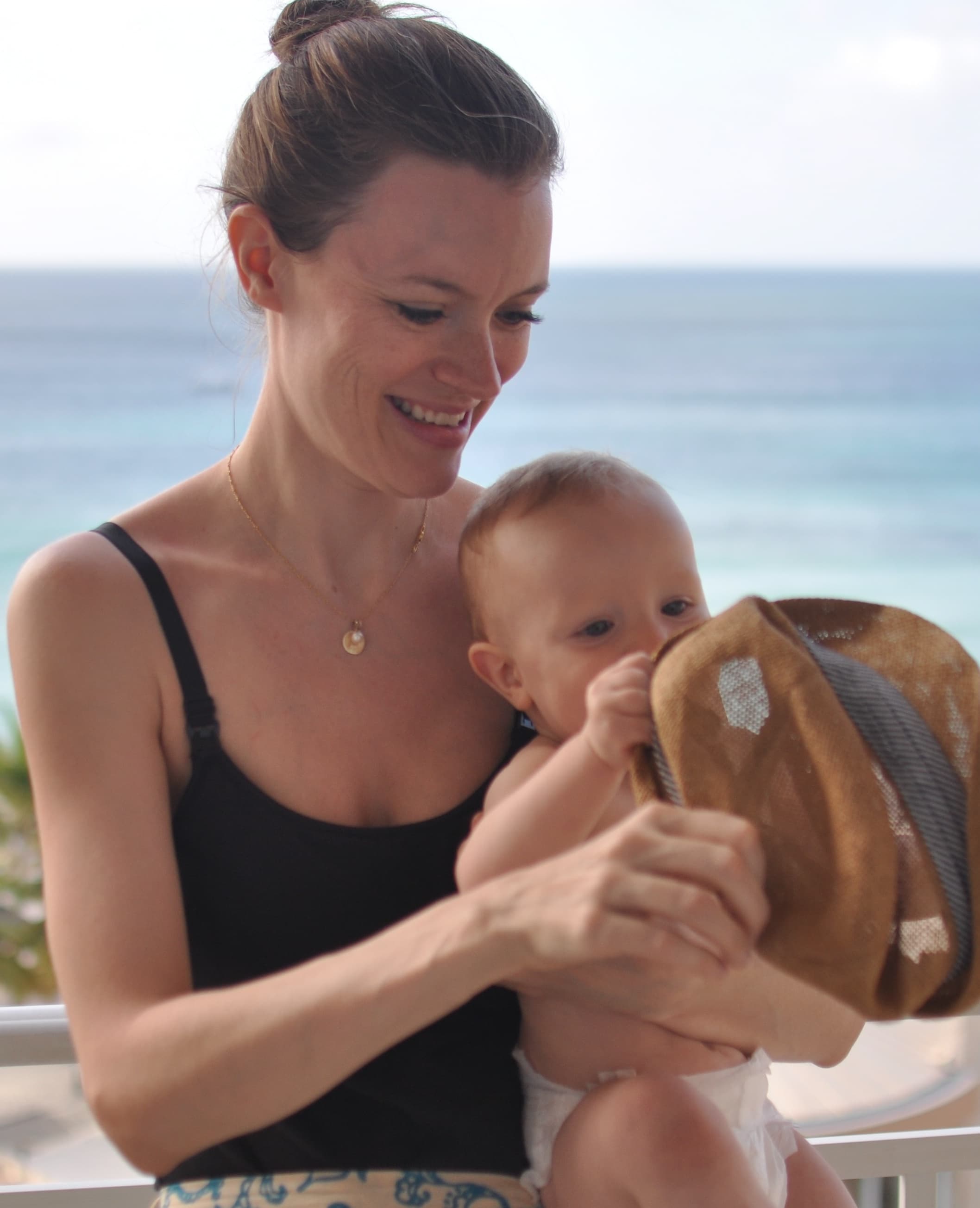
What Is the Safest Sunscreen to Use?
Given the dangers of chemical sunscreens, the safest way to avoid sunburn is to use a natural sunscreen that contains “barrier” ingredients, such as titanium dioxide or zinc oxide.
Chemical sunscreen ingredients, like the ones listed above, work by absorbing UV radiation. By contrast, mineral sunscreens work by reflecting the UV radiation.
Because the application of these ingredients leaves skin with a telltale white sheen, nanoparticles are typically used in mineral sunscreens. (Nanoparticles are just teeny microscopic particles that are less than 100 nanometers in diameter.)
There has been some concern that these nanoparticles are small enough to penetrate cell membranes. Normally, our cells recognize foreign material as an invader and block it out, so it’s scary to think that nanparticles could get past that. Fortunately, more recent research suggests that DNA damage from nanoparticles is not very likely.
Instead of nanoparticles, some natural sunscreen producers use “micronized” particles — basically, these are just slightly larger than nanoparticles (so larger than 100 nanometers). Research suggests that particles must be 50 nanometers or less to penetrate a cell membrane, so micronized minerals in sunscreen should be safe.
Which Sunscreens Are Not Toxic? Zinc V. Titanium Dioxide
Most mineral sunscreens contain both zinc and titanium dioxide. We have a slight preference for zinc because it is more effective at blocking UVA rays. In addition, titanium dioxide is harmful–even potentially carcinogenic–if inhaled.
For this reason, our favorite non-toxic sunscreen will have more zinc oxide than titanium dioxide, especially when in a spray formulation. But we still think brands that use titanium dioxide can be considered non-toxic sunscreen.
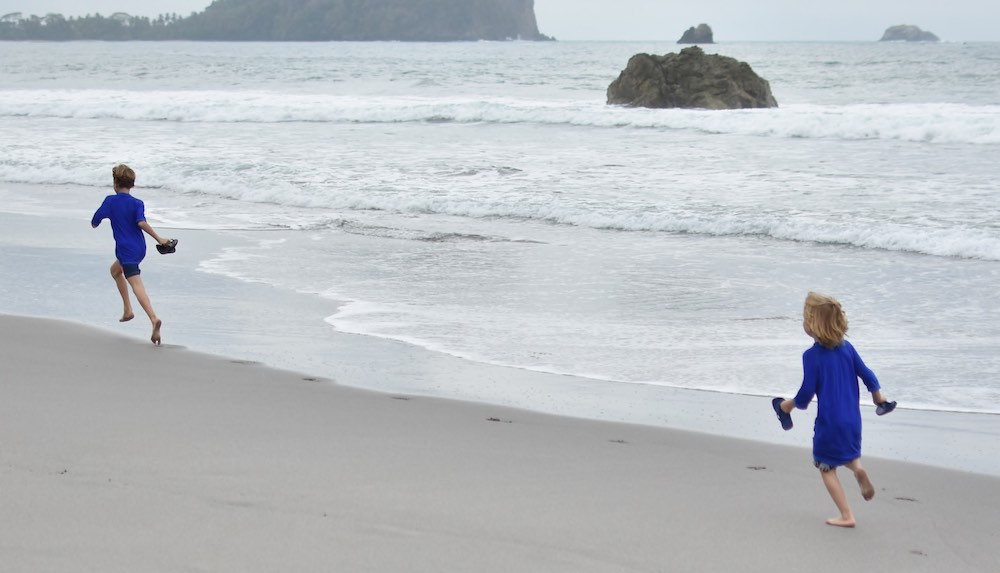
My Top Pick for Non-Toxic Sunscreen for Kids & Babies
Babo’s Sheer Zinc spray sunscreen has been a total game-changer for my family, since my kids hate having creams applied. It’s in a non-aerosol can, contains no concerning ingredients, and is water resistant.
For babies, I love Babo’s Baby Skin mineral spray,which goes on extra light for that sensitive infant skin.
Non-Toxic Sunscreen with No Whiteness
If you want a truly clear sunscreen, the only option is chemical absorbers. The safest one we found is Coola Classic Sunscreen Spray- SPF 30, which uses avobenzone, octisalate, and octocrylene. These are the least concerning of the chemical sunscreen ingredients, and all of the inactive ingredients are totally safe.
Just be aware that other Coola sunscreens, including the cream formulas, have homosalate in them, and this is an ingredient that you really do want to avoid if possible.
So now that you know what we were looking for in our search for best non-toxic sunscreens, let’s take a look at the best and the worst brands on the market.
Best Stuff: Non-Toxic Sunscreen Brands
3rd Rock Sunblock
- Utilizes zinc oxide as a mineral block.
- Entirely safe list of ingredients.
Cost per ounce: $10.98
Ingredients: Zinc oxide (23.5%), vegetable glycerin, water, simmondsia chinensis (jojoba) oil, gamma oryzanol, olea europaea (olive) fruit oil, L-arginine, aloe barbadensis leaf gel, high mountain desert beeswax, citrus aurantium dulcis (orange) peel wax, phosphatidyl choline and / or coconut oil extract, boswellia sacra (frankincense) oil, rosmarinus officinalis (rosemary) oil, tocopherol, ascorbic acid, zea mays (corn) starch, maranta arundinacea (arrowroot) root extract, xanthan gum.
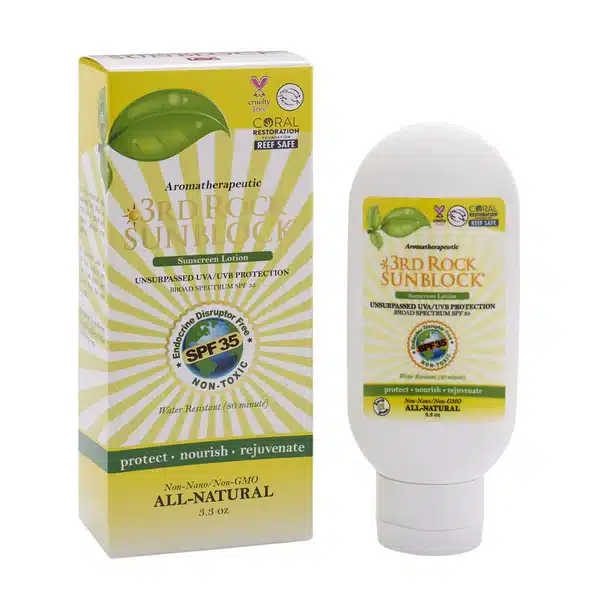
Adorable Baby Natural Sunscreen
- Utilizes zinc oxide as a mineral block.
- Greasier formula, which I prefer to the chalkier brands.
Cost per ounce: $5.99
Ingredients: Zinc Oxide 24% – Active Ingredient, Water, Caprylic/Capric Triglyceride, Ethyl Macadamiate, Bis-Octyldodecyl Dimer Dilinoleate/Propanediol Copolymer, Glyceryl Stearate SE, Butyrospermum Parkii (Shea) Butter, Lauryl Laurate, C20-22 Alkyl Phosphate, Microcrystalline Cellulose, C20-22 Alcohols, Polyhydroxystearic Acid, Oryza Sativa (Rice) Bran Wax, Rubus Idaeus (Raspberry) Seed Oil, Persea Gratissima (Avocado) Oil, Adansonia Digitata Seed (Baobab) Oil, Simmondsia Chinensis (Jojoba) Seed Oil, Euphorbia Cerifera (Candelilla) Wax, Glyceryl Caprylate, Tocopherol, Polyglyceryl-3 Stearate, Pongamol, Glyceryl Undecylenate, Potassium Sorbate, Citric Acid, Sodium Phytate
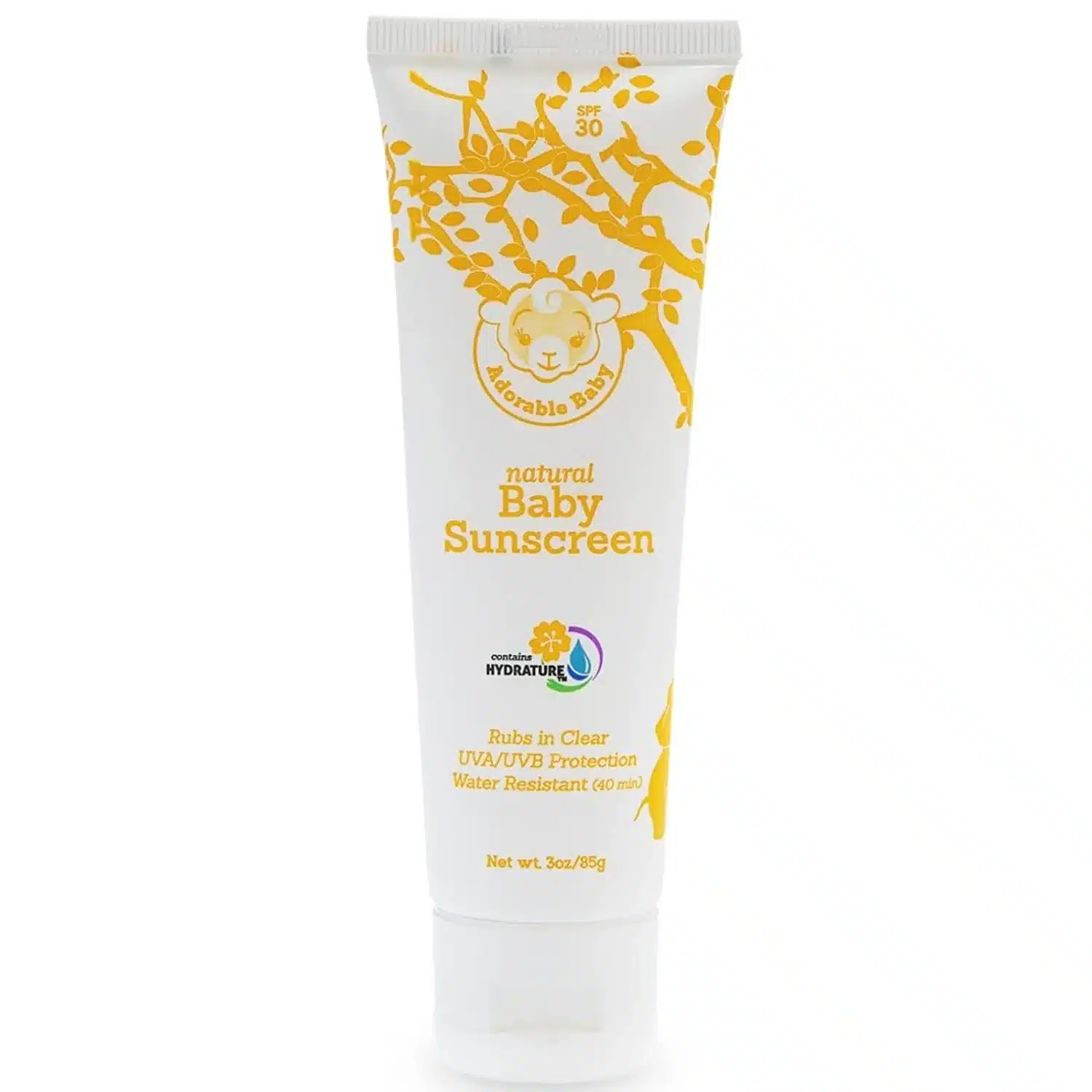
All Good Sunscreens
- Utilizes zinc oxide as a mineral block.
- I’m partial to the spray version, but All Good’s SPF creams are also great.
- Many of the ingredients are organic.
- Lab tested and shown to be free of heavy metals.
- EWG Verified.
Cost per ounce: $3.33
Ingredients: Active Ingredient: Zinc Oxide 12% (Non-nanoparticle) Inactive Ingredients: Organic Aloe Barbaden- sis (Aloe) Leaf Juice*, Bentonite, Butyloctyl Salicylate, Organic Calendula Of cinalis (Calendula) Flower*, Capryl- hydroxamic Acid, Caprylyl Glycol, Organic Carthamus Tinctorius (Saf ower) Seed Oil*, Cellulose Gum, Cetearyl Alcohol, Organic Chamomilla Recutita (Chamomile) Flower Extract*, Coco-Glucoside, Glycerin, Organic Helianthus Annuus (Sun ower) Seed Oil*, Jojoba Esters, Organic Mauritia Flexuosa (Buriti) Fruit Oil*, Methyl Dihydroabi- etate, Microcrystalline Cellulose, Octyldodecyl Oleate, Organic Olea Europaea (Olive) Oil*, Water (Aqua). Certified Organic to USDA/NOP Standards.
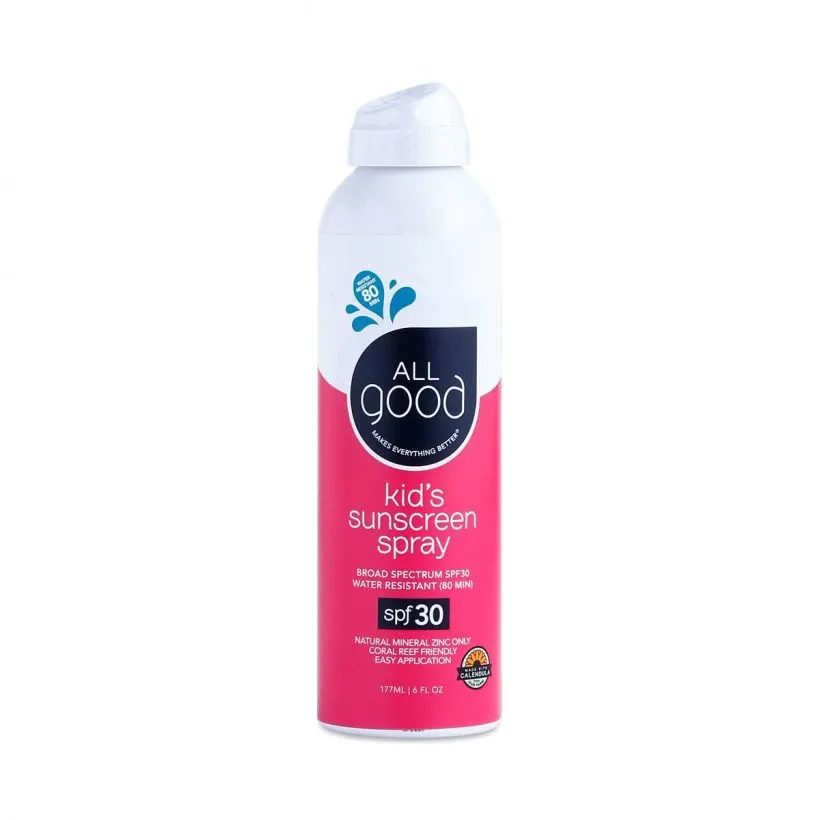
Attitude Sunly Mineral Sunscreen
- Utilizes zinc oxide as a mineral block.
- EWG Verified.
- Comes in cream or plastic-free stick formulas.
Cost per ounce: $4.58
ˆngredients: Active ingredient : Zinc oxide (20 %). Inactive ingredients : Aqua / Water / Eau, Caprylic/Capric Triglyceride, Cetearyl Glucoside, Glyceryl Stearate, Cetearyl Alcohol, Polyhydroxystearic Acid, C10-18 Triglycerides, Glycerin (soybeans/soja), Ethylhexylglycerin, Caprylyl Glycol, Behenyl Alcohol, Sodium Chloride, Xanthan Gum, Sodium Gluconate, Methyldihydrojasmonate*, Pentadecalactone*, Phenethyl Acetate*, Triethyl Citrate*, Vanillin*, *fragrance (Parfum).
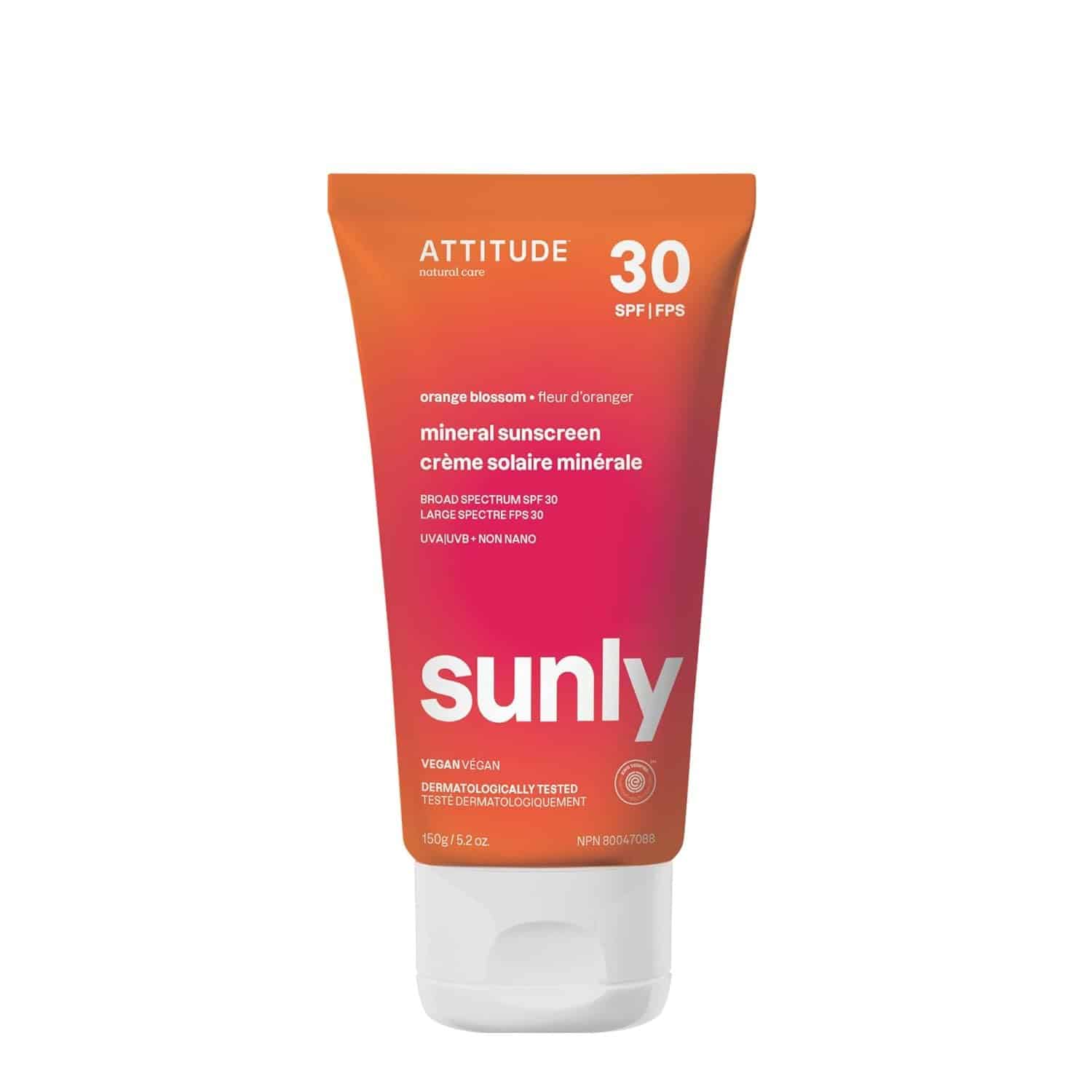
Babo Botanicals Sunscreen
- Utilizes zinc oxide as a mineral block.
- We carry Babo sunscreen creams and sprays in our store, and they are what we bring to the beach ourselves.
- Most affordable non-toxic sunscreen brand we reviewed.
Cost per ounce: $3.92
Ingredients: Active ingredient: Zinc Oxide 12%
Inactive ingredients: Water (Aqua), Butyloctyl Salicylate, Bentonite, Carthamus Tinctorius (Safflower) Seed Oil^, Heptyl Undecylenate^, Methyl Dihydroabietate, Aloe Barbadensis (Aloe Vera) Leaf Juice^, Jojoba Esters^, Helianthus Annuus (Sunflower) Seed Oil*^, Calendula Officinalis Flower Extract*^, Chamomilla Recutita (Matricaria) Flower Extract*^, Nasturtium Officinale (Watercress) Flower/Leaf Extract*^, Spiraea Ulmaria (Meadowsweet) Flower Extract*^, Glycerin^, Coco-Glucoside^, Caprylyl Glycol, Caprylhydroxamic Acid^, Cetearyl Alcohol^.
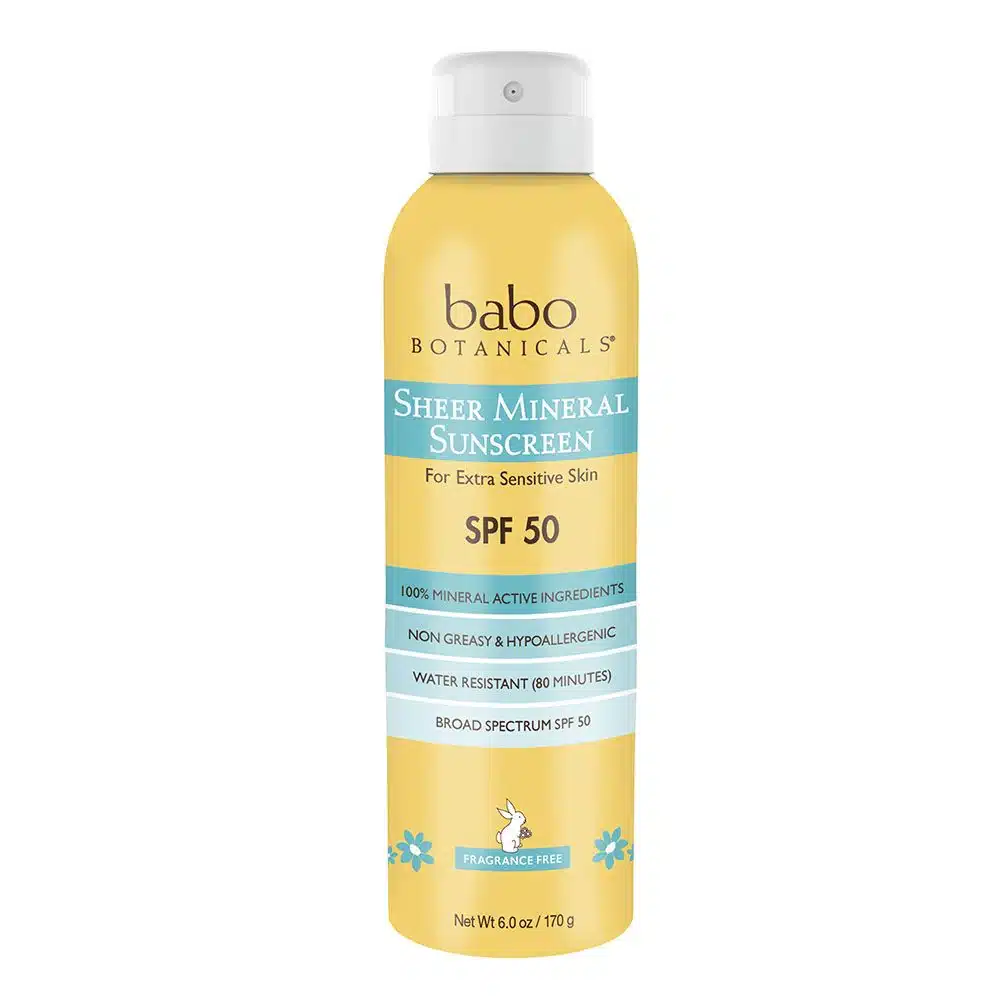
Badger Sunscreen
- Utilizes zinc oxide as a mineral block.
- Badger makes a range of non-toxic sunscreen products, all of which are mineral-based and without any Bad Stuff.
- I am in particular a fan of their formula for kids in SPF 40, but Badger is one of those brand where you can shop their entire line (sunscreen and otherwise) without any concern.
Cost per ounce: $5.27
Ingredients: Uncoated Clear Zinc Oxide, Organic Sunflower Oil, Organic Beeswax, Organic Orange Oil, Organic Jojoba Oil, Organic Tangerine Oil, Sunflower Vitamin E, Organic Vanilla Extract & Organic Seabuckthorn Extract (98% Organic & Certified Non-GMO)
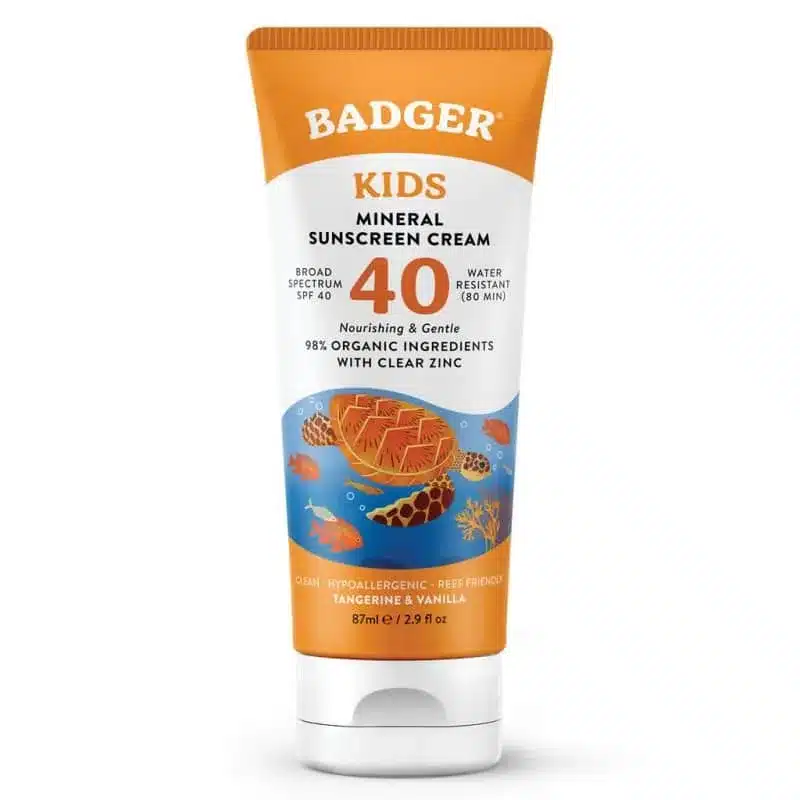
Beautycounter Sunscreen
- Utilizes zinc oxide as a mineral block.
- Entire line of sun protection is safe.
- One product that I am obsessed with it Beautycounter’s facial sunscreen lotion — I have been using this for years.There is zero white sheen to this, and it feels legitimately moisturizing instead of chalky. (One note: it does contain phenoxyethanol.)
- Some of the Beautycounter sunscreens are EWG Verified.
Cost per ounce: $6.66
Ingredients: Active Ingredients: Zinc Oxide (sunscreen) 19%; Inactive Ingredients: Water, Caprylic/Capric Triglyceride, Coco-Caprylate, Cetearyl Nonanoate, Ethylhexyl Palmitate, Isopropyl Palmitate, Polyglyceryl-4 Diisostearate/Polyhydroxystearate/Sebacate, Glycerin, Isopropyl Myristate, Magnesium Sulfate, Beeswax, Phenoxyethanol, Silica, Sodium Chloride, Isostearic Acid, Lecithin, Polyglyceryl-3 Polyricinoleate, Polyhydroxystearic Acid, Hydrogenated Castor Oil, Decylene Glycol, Citrus Aurantium Dulcis (Orange) Peel Oil, Aloe Barbadensis Leaf Juice, 1,2-Hexanediol, Citrus Limon (Lemon) Peel Oil, Citrus Reticulata (Tangerine) Fruit Extract, Citrus Reticulata (Tangerine) Peel Oil, Eschscholzia Californica Leaf Cell Extract, Mentha Piperita (Peppermint) Oil, Mimosa Tenuiflora Bark Extract.
Crunchi SunLight
- Utilizes zinc oxide as a mineral block.
- Packaged in aluminum instead of plastic.
- Contains squalene for hydration.
Cost per ounce: $12.42
Ingredients: ACTIVE INGREDIENTS: Zinc Oxide – 12.5%
INACTIVE INGREDIENTS: Bisabolol*, Butyloctyl Salicylate, Butyrospermum Parkii (Shea) Butter*, Cetearyl Alcohol, Cetearyl Olivate, Cetyl Palmitate, Citric Acid, Coco-Caprylate/Caprate, Coconut Alkanes, Ethyl Ferulate, Ethylhexyl Olivate, Glyceryl Caprylate, Glyceryl Undecylenate, Heptyl Undecylenate, Methyl Dihydroabietate, Phenethyl Alcohol, Polyhydroxystearic Acid, Propanediol, Sodium Hyaluronate, Sodium Phytate, Sodium Stearoyl Glutamate, Sorbitan Oleate, Sorbitan Olivate, Sorbitan Palmitate, Squalane, Tocopherol, Triethoxycaprylylsilane, Vitis Vinifera (Grape) Seed Oil*, Water, Xanthan Gum
*Certified Organic Ingredients
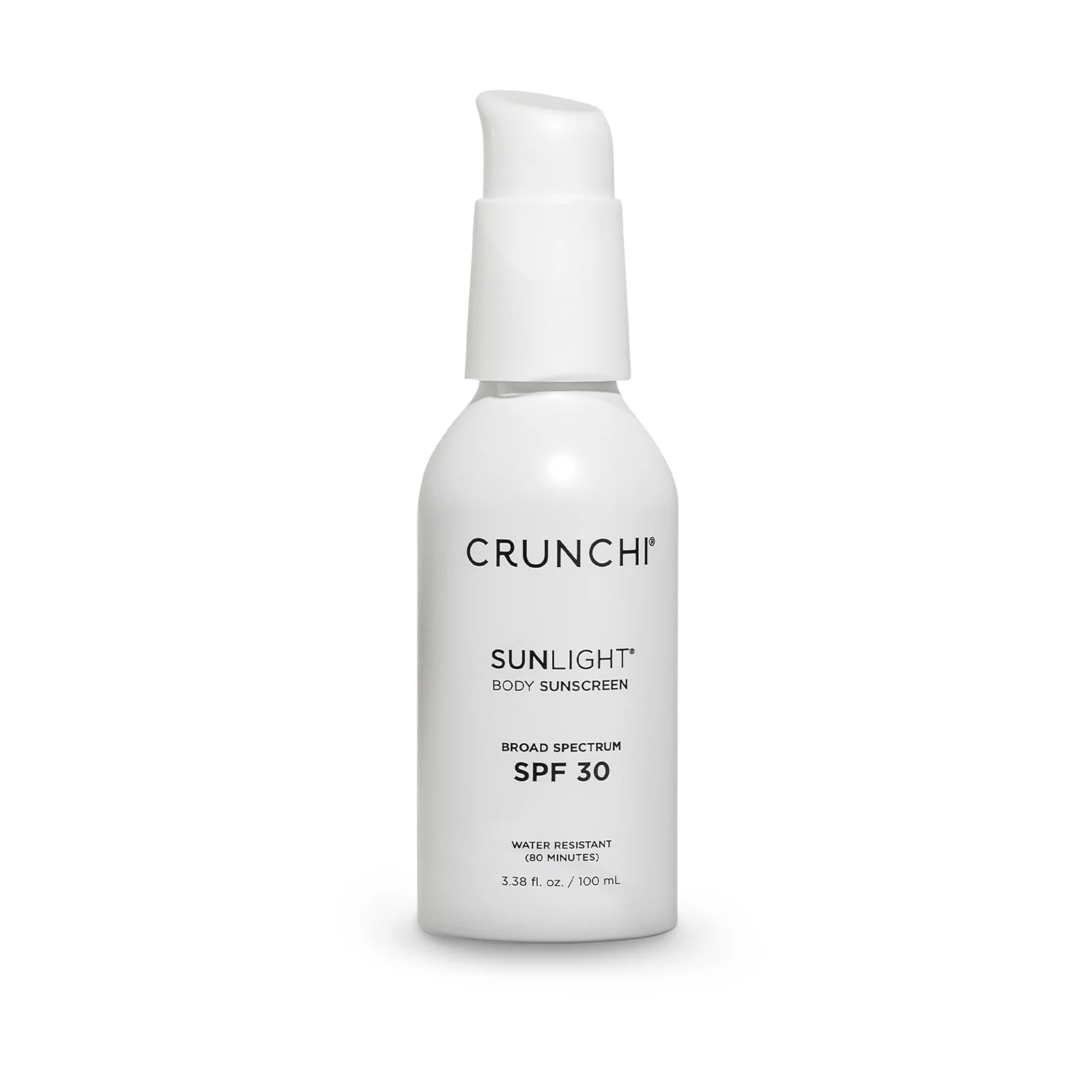
Earth Mama
- Utilizes zinc oxide as a mineral block.
- All ingredients are organic.
- This brand was tested for PFAS by Mamavation and came up clean.
Cost per use: $5.00
Ingredients: Active Ingredients: Zinc Oxide 25%, Inactive Ingredients: Cocos Nucifera (Coconut) Oil*, Cocos Nucifera (Fractionated Coconut) Oil*, Cera Alba (Beeswax)*, Olea Europaea (Olive) Fruit Oil*, Rubus Idaeus (Red Raspberry) Seed Oil*, Punica Granatum (Pomegranate) Seed Oil*, Simmondsia Chinensis (Jojoba) Seed Oil*, Butyrospermum Parkii (Shea) Butter*, Tocopherol, Calendula Officinalis Flower (Calendula) Flower Extract* *Organic
Kabana Greenscreen
- Utilizes zinc oxide as a mineral block.
- Because it contains non-micronized zinc oxide, it goes on a bit white.
- Contains vitamin D to combat what you’ll lose by using other brands of non-toxic sunscreen.
- We also love Kabana’s stick formula, and they even make a body wash with SPF!
Cost per ounce: $5.54
Ingredients: 25% Zinc Oxide USP (zinc oxide), Artesian Spring Water (aqua), Extra Virgin Olive Oil* (Olea europaea Fruit Oil), Jojoba Oil* (Simmondsia chinensis Seed Oil), Vegetable Glycerin” (Glycerin), Shea Butter* (Butyrospermum parkii Seed Oil), Vegetable Emulsifying Wax NF (polysorbate 60 and cetearyl alcohol), Vitamin E (tocopherol). *Organic
Kinfield Sunglow
- Utilizes zinc oxide as a mineral block.
- Kinfield definitely has the chicest packaging of all the non-toxic sunscreen brands.
- I like both their facial and body formulas.
Cost per ounce: $6.75
Ingredients: ACTIVE INGREDIENTS: Zinc Oxide (20.0%) INACTIVE INGREDIENTS:
Water, Capric/Caprylic Triglyceride, Isoamyl Laurate, Polyglyceryl-2 Oleate, Hydrogenated Methyl Abietate, Polyhydroxystearic Acid, Glycerin, Sodium Chloride, Polyglyceryl-2 Stearate, Triethoxycaprylylsilane, Glyceryl Caprylate, Caprylhydroxamic Acid, Aloe Barbadensis Leaf Extract, Coco-Caprylate, Macrocystis Pyrifera (Sea Kelp) Extract, Allantoin, Natural Fragrance*
Pipette
- Utilizes zinc oxide as a mineral block.
- Pipette’s list of ingredients is longer than other brands, but we still consider this line of baby sunscreen to be Good Stuff.
- They’ve recently debuted a spray and stick version, in addition to the cream.
- Use code THEGOODSTUFF for 20% off when you shop on Pipette’s website.
Cost per ounce: $4
Ingredients: Inactive Ingredients: Water, Caprylic/Capric Triglyceride, Squalane, Glycerin, Cetearyl Alcohol, Methyl Dihydroabietate, Sorbitan Olivate, Cetyl Palmitate, Coco-Glucosid, Ethyl Ferulate, Caprylyl/Capryl Glucoside, Lecithin, Bisabolol, Physalis Angulata (Wild Gooseberry) Extract, Xanthum Gum, Acacia Senegal Gum, Sodium Gluconate, Isotearic Acid, Polyhydroxystearic Acid, 1,2-Hexanediol, Polyglyceryl-3 Polyricinoleate, Hydroxyacetophenone, Caprylyl Glycol, Acacia Senegal Gum, Sodium Gluconate, Isostearic Acid, Polyhydroxystearic Acid, 1,2-Hexanediol, Polyglyceryl-3 Polyricinoleate, Hydroxyacetophenone, Caprylyl Glycol.
Poofy Organics
- Utilizes zinc oxide as a mineral block.P
- Poofy also makes a stick sunscreen.
- Both have entirely safe ingredients in them, including jojoba oil, coconut oil, shea butter, and only non-micronized zinc oxide.
- This is among the cleanest, simplest ingredient lists of any sunscreen we reviewed.
- Use code MAIAJAMES for 10% off.
Cost per ounce: $5.29
Ingredients: Organic Jojoba Oil, Organic Unrefined Shea Butter, Organic Beeswax, Organic Virgin Coconut Oil, Organic Camellia Oil, Organic Cocoa Butter, NON-NANO, NON-Micronized Zinc Oxide, Organic Rosemary Extract.
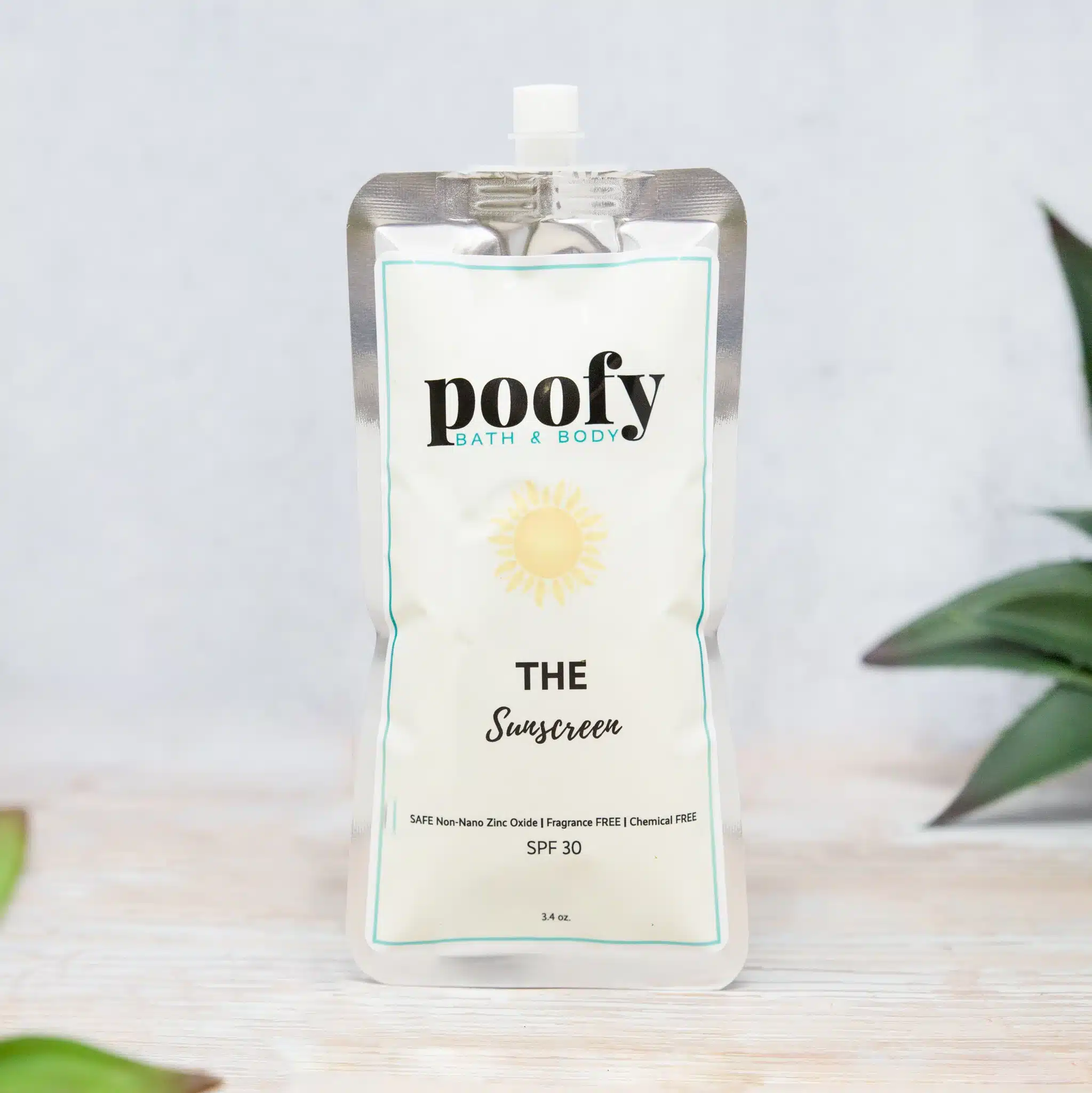
Thinkbaby
- Utilizes zinc oxide as a mineral block.
- Thinkbaby sunscreen is a top brand in EWG’s datatbase.
- Spray versions have a small amount of added titanium dioxide.
Cost per ounce: $4.67
Ingredients: Purified Water, Caprylic/Capric Triglyceride, Polyglycery/-4 Isostearate, Glycerin, Hydrogenated Glyceryl Abietate, Hexyl Laurate, Cetyl Dimethicone, Sorbitan Sesquioleate, Magnesium Sulfate, Tocopherol, Sodium Hyaluronate, Helianthus Annuus (Sunflower) Seed Oil, Simmondsia Chinensis (Jojoba) Seed Oil, Ólea Europea (Olive) Fruit Oil, Citrus Paradisi (Grapefruit) Peel Oil, Vaccinium Macrocarpon (Cranberry) Seed Oil, Rubus Idaeus (Raspberry) Seed Oil, Carica Papaya (Papaya) Fruit Extract, Hydrogenated Castor Oil, Caprylhydroxamic Acid, Triethoxycaprylylsilane, Glyceryl Caprylate, Natural Fragrance Oil
Good Stuff: Less Toxic Sunscreen Brands
California Baby
- California Baby sunscreens contain more synthetic ingredients than most of the other Good Stuff on our list.
- Contains just titanium dioxide rather than chemical sunscreen ingredients, and overall I consider it a safe option.
Cost per ounce: $8.96
Ingredients: Active Ingredient: Titanium Dioxide 12% Inactive Ingredients: Water, Isoamyl Laurate, Coco-Caprylate, Calendula Officinalis Extract (Calendula), Viola Tricolor Extract (Pansy), Polyglyceryl-2 Dipolyhydroxystearate, Euphorbia Cerifera (Candelilla) Wax, Glyceryl Starch, Carthamus Tinctorius (Safflower) Oleosomes, Polyglyceryl-3 Diisostearate, Levulinic Acid, Glycerin, Tapioca Starch, Rosmarinus Officinalis (Rosemary) Leaf Extract, Cocos Nucifera (Coconut) Oil, Gardenia Tahitensis Flower Extract, Squalane, Magnesium Stearate, P-Anisic Acid, Cymbopogon Schoenanthus Oil, Allantoin, Panthenol. (Certified Organic Ingredients: Tapioca Starch)
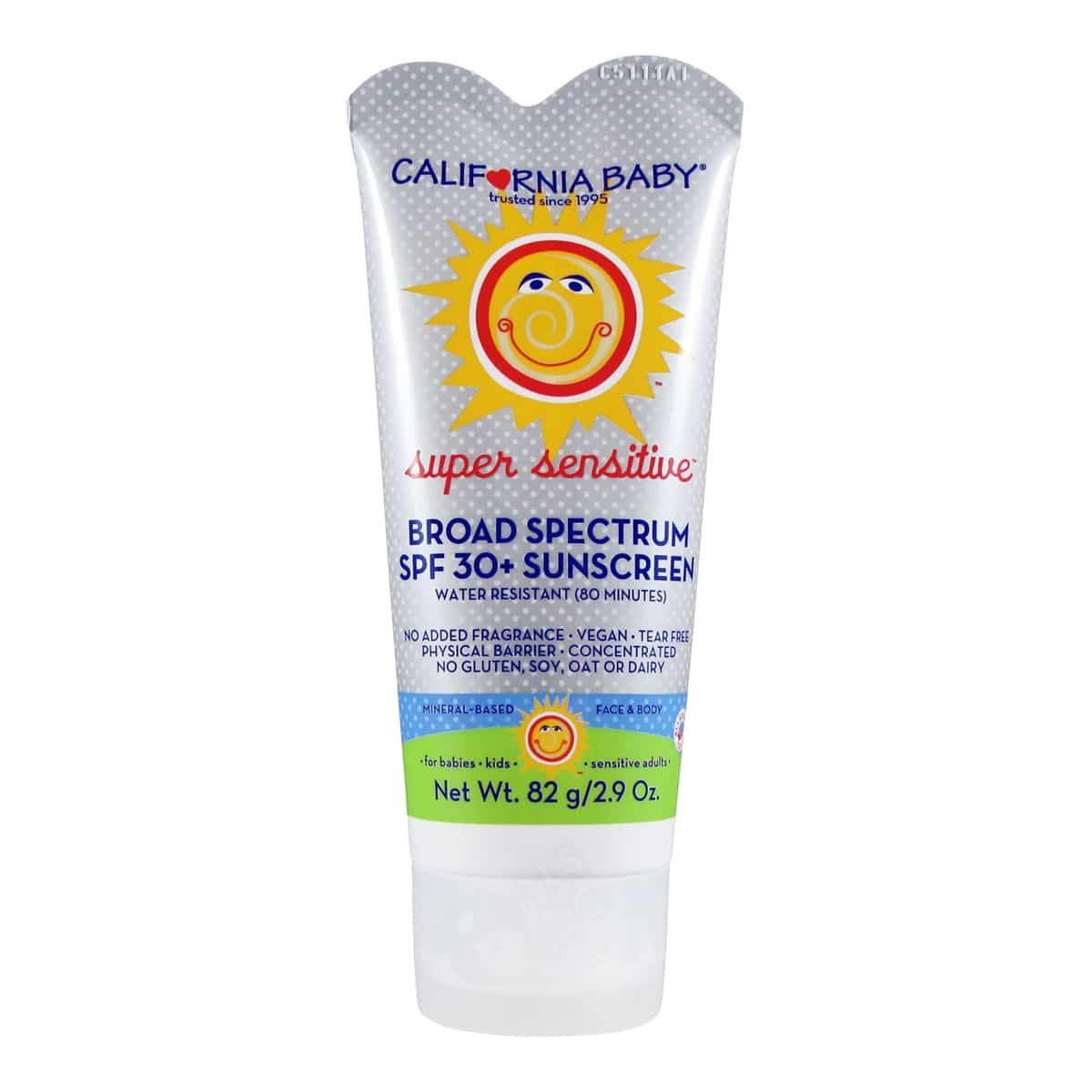
Bad Stuff: Toxic Sunscreen Brands
Almost all conventional baby sunscreens should be avoided, but below are some of the very worst.
Coppertone. Stay away from all varieties of Coppertone sunscreens–they contain homosalate, avobenzone, and synthetic fragrance.
No-Ad. While these sunscreens don’t contain oxybenzone, you’ll still find avobenzone, homosalate, and octisalate.
La Roche-Posay sunscreen has a lot of fans — many of you have asked about this one. Unfortunately, I’m not a fan of the ingredients–lots of synthetics, including PEG chemicals and four kinds of chemical sunscreens.
Neutrogena’s sunscreen was recalled after it was found to be contaminated with carcinogenic benzene.
Sneaky Stuff: Greenwashed Sunscreen Brands
Alba Botanica’s spray sunscreen smells so good, but contains chemical sunblock ingredients, including avobenzone, as well as phenoxyethanol and alumina.
Aveeno has done a brilliant job marketing itself as natural. Unfortunately, even their zinc formula contains a bunch of gross ingredients, including PEG chemicals. Aveeno sunscreen was also recalled after it was found to be contaminated with carcinogenic benzene in this study.
Banana Boat makes mineral suncreens, but they still contain alumina, PEGs, and phenoxyethanol.
Cerave Baby Sunscreen Lotion contains PEG chemicals and phenoxyethanol.
Coppertone Pure & Simple Baby Mineral Sunscreen lotion contains PEGs and propylene glycol.
Blue Lizard‘s “mineral-based” kids’ formula contains chemical sunscreen ingredients in addition to zinc oxide. It also contains PEG chemicals and phenoxyethanol. Their Baby Mineral Sunscreen is free of the chemical sunscreens, but still contains PEGs and phenoxyethanol.
Most BabyGanics sunscreens are loaded with bad ingredients such as alumina, octinoxate, phenoxyethanol, polysorbate-60, and alumina. If you’re going to go with Babyganics, definitely choose their mineral formula, although this still contains alumina and phenoxyethanol.
Kiss My Face makes a range of sunscreens, and some are better than others. The worst of them contain chemical sunblockers. Even their mineral formulas contain phenoxyethanol and alumina.
Panama Jack Naturals Baby Sunblock does skip the fragrance, but it can hardly be considered natural, considering it contains avobenzone and synthetic fragrance.
Raw Elements sunscreen is contaminated with carcinogenic benzene, at least as of this 2021 study.
Supergoop! sunscreen contain chemical sun-blocking agents in most formulas. Their 100% mineral sunscreens are, to be fair, very similar to our list of Good and Best sunscreens. However, we’d prefer you support those brands that are not polluting the environment with any of their products!
You know I love me some TJ’s, but Trader Joe’s spray sunscreen is total Sneaky Stuff. It contains 15% homosalate, one of the worst chemical sunscreen ingredients.
Whole Foods spray sunscreen uses three chemical ingredients.
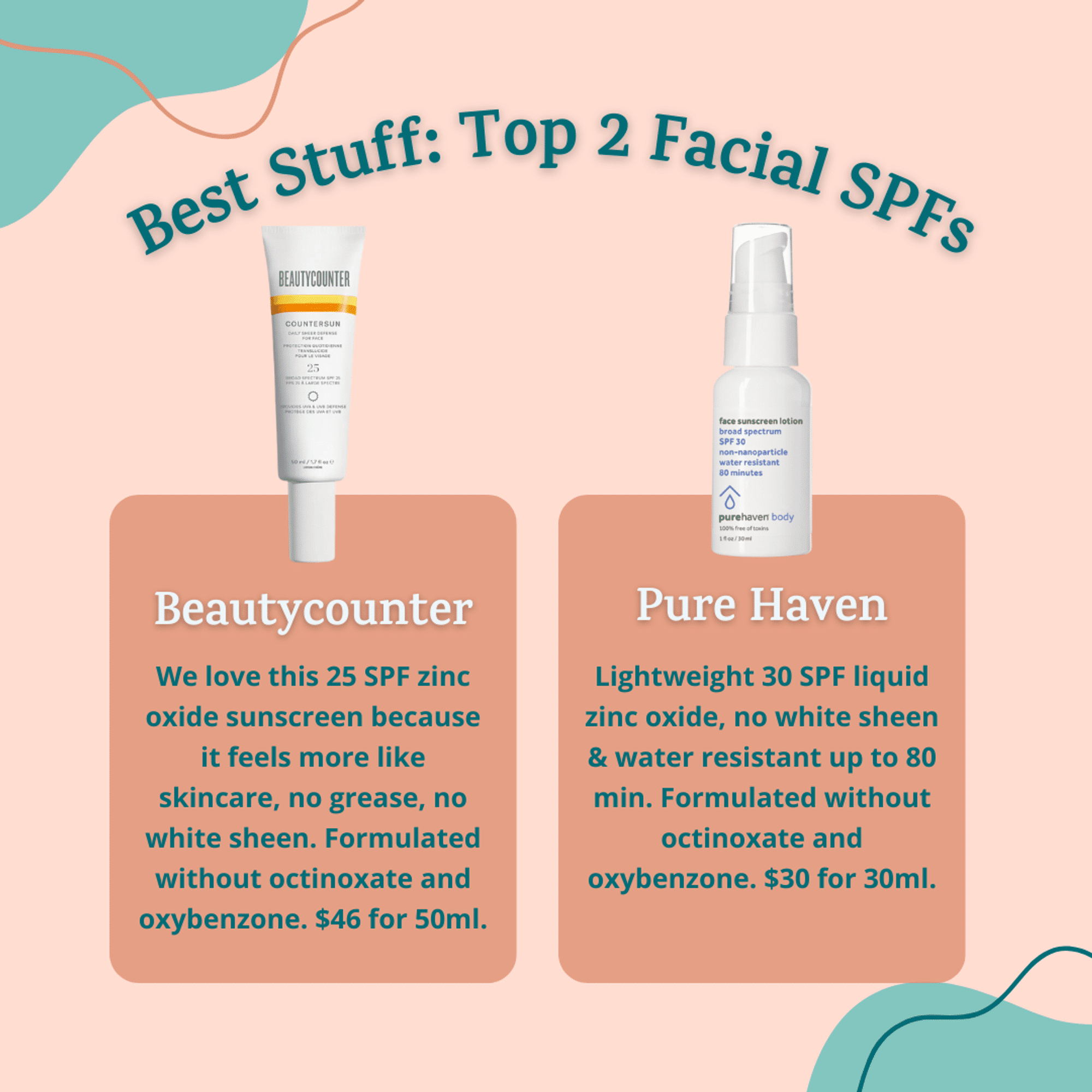
Non-Toxic Sunscreen for the Face
This guide is focused on the best non-toxic sunscreen for the whole family. But, if you’re in your 40s like I am, you are probably wearing sunscreen on your face every day, all year round. I’ve tried a TON of non-toxic sunscreens that are formulated for your face, and these are my favorite hands-down.
If you want a creamy, non-chalky facial SPF that feels like high-end skincare, try the Beautycounter. (I’ve been using this for years.)
If you want a slighter higher SPF but still without ANY white caste, in a thinner more lotion-like formula, that will last forever because you can use such a small amount, try the Pure Haven.
What Are the Most Natural Sunscreens?
If you want your non-toxic sunscreen to have the absolute simplest list of natural ingredients, you’ll want to check out these brands in particular:
Non-Toxic Sunscreen in Our Store
I hope this guide makes choosing a non-toxic sunscreen a little bit easier. Please comment below with other brands you’d like us to include.
Stay sane,


Maia, Founder & CEO
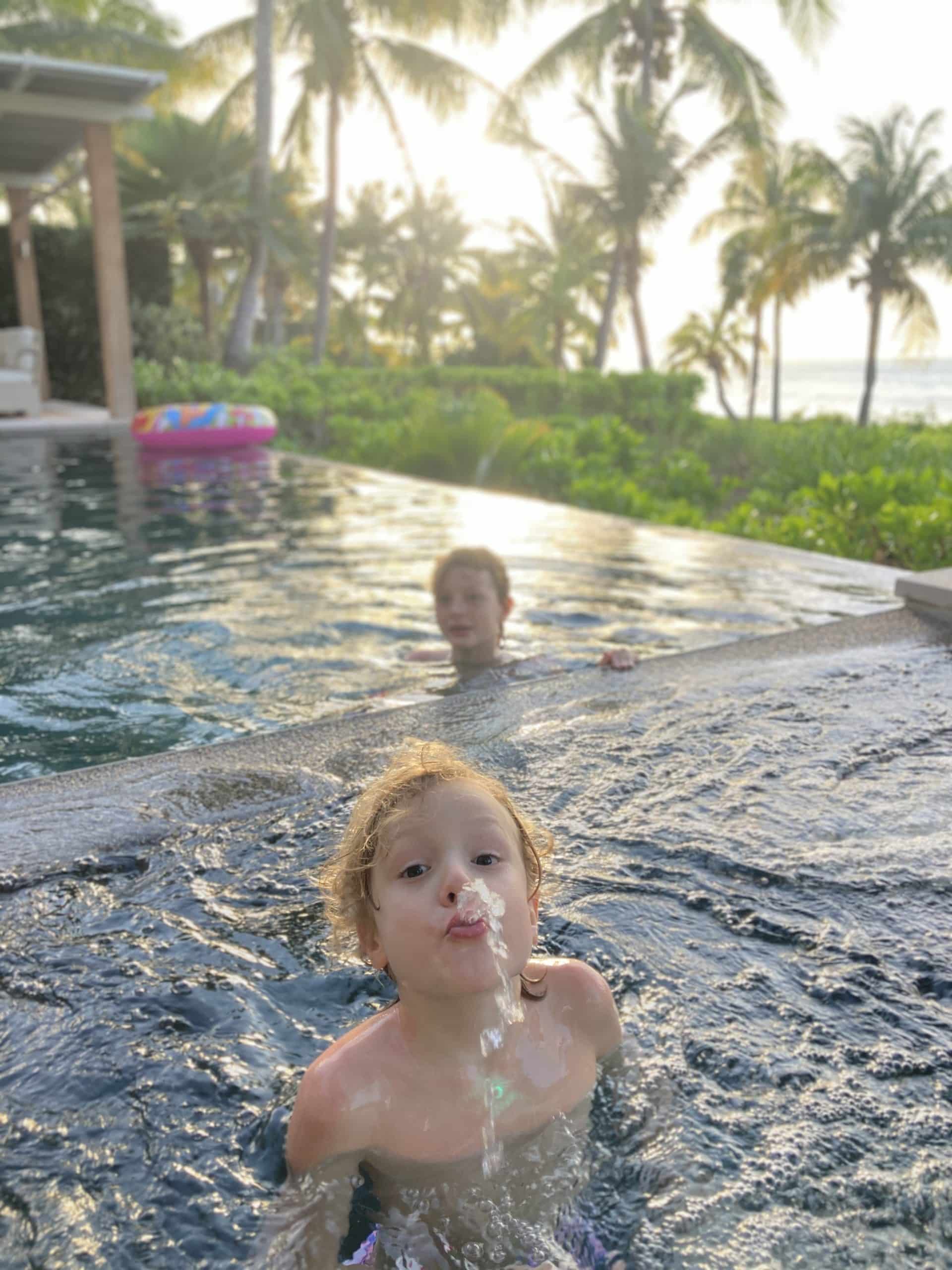
Note: This article contains affiliate links or sponsored content, which means that if you make a purchase, we may earn a commission. We only recommend products that meet our strict standards for non-toxicity and that we use (or want to use!) ourselves. Thank you so much for supporting the brands that make Good Stuff!
Enjoying this guide?
Join 60K families who rely on our free guides on everything from milk to mattresses! Sign up to get $5 off your first order, access to our ultimate Clean Products Cheat Sheet, and ongoing exclusive access to coupon codes and promotions. Our weekly newsletter is filled with well researched tips and tricks to live a toxin-free lifestyle.
Related Posts
The Best Natural Soap Guide 2024
Safer Summer Camp Supplies 2023
Safe Deodorant Guide
Finding the Good Stuff in Arizona (Sedona, Scottsdale, Grand Canyon)
190 responses to “Non-Toxic Sunscreen Guide”
-
Hi Maia,
What do you think of this brand – https://www.ever-eden.com. I have been using their products a lot for my kids from body wash to sunscreen.Appreciate your advice as always.
-
Thanks for the comment, I am happy to tell you that ever-eden is a brand that we consider Good Stuff! Maybe we will add them next time we update the sunscreen guide. Thanks for the suggestion 🙂
-
-
LOVE that you’ve included the cost per ounce here, thank you so much for that!!
I’ve been using Mychelle Replenishing Solar Defense on my face for years and I love it, any thoughts on that brand? It’s pretty accessible/affordable which is a plus.
-
Hey Zoe!
Thanks for your feedback.
What are the ingredients on that brand? I could look into it for the next update!
-
-
Hi Maia,
I sometimes use Acure sunblock. Do you consider it good stuff or should I use something safer? -
How does Coola rank?
-
We’ve added this to the guide 🙂
-
-
The perfct sunscreen for Felix!
How about considering in your next piece on Sunscreen, Caribbesan Sol? We check every box noted in your detailed review and one more…Our tubes are made of sugar cane! yes it is sustainable (no plastic packaging even the tube’s cap) and our formula is biodegradable. Should we say more?
-
Do any of the natural sunscreens actually work? I’ve tried several, but get burned every time.
-
Babo spray works ok as long as you very diligently reapply.
Badger cream works best, though, of all the natural sunscreens we buy. All sunscreens need reapplication, as does this one. My family varies quite a bit in our sun resistance/burning tendency and this sunscreen has worked for everyone. Hope that helps.
-
-
Thank you for the guidance! I just bought the babo botanicals continuous spray but I’m confused as to why it’s shown as non-aerosol on your site? It seems this is an aerosol spray can now that I’ve received it and I’m looking at it in person. Is there another mechanism other than aerosol being utilized?
-
As a Black woman with Black children, I find most of these sunscreens leave a white cast on our skin. Any feedback on Blackgirl Sunscreen products? They have a kids product as well.
-
There are a few ingredients in here that aren’t my favorite, but overall it’s pretty good! I would feel fine using this brand:). Beautycounter also has a nice tinted mineral sunscreen:
-
UnSun is a natural sunscreen company founded by a black woman, Katonya Breaux (Frank Ocean’s mom). https://www.unsuncosmetics.com/products/unsun-spf30-tinted-mineral-sunscreen
-
-
I was looking at hello bello sunscreen, it appears to be fine. What are your thoughts?
-
Ever heard of Raw Elements? It’s sold through Thrive Market. Just wondering if they seem like a good bet (for kids).
-
I’m loving the stick sunscreens for my little kids. Just got the Babo sport stick on your reco and love it – it’s clear! I also just got the Waxhead stick. It goes on more white but says it’s reef safe and only 4 ingredients. 1) 25% non-nano Zinc Oxide, 2) Certified Organic Extra Virgin Coconut Oil, 3) Certified Organic Beeswax, 4) Certified Organic Vanilla Extract. What do you think of Waxhead?
-
Any evaluations of Sun Bum Sunscreen?
-
Hi Maria
I also need a stronger sunscreen especially for my face. I burn in 10 minutes. Can you recommend anything that is at least 50? What about CeraVe? Please let me know. I’m 60 and I sure don’t want premature skin aging!Thank you.
Terri -
Hey Maia! Have you looked into raw elements? Their kids line seems awesome.
-
Hello, thank you so much for the summary and research on sunscreens. I wanted to ask if you’ve read the Clean Label Project sunscreen study? They mention a concern regarding the lead found in mineral sunscreen (especially for toddlers) and now I’m beyond confused what to use for my daughter. Here is the link:
https://cleanlabelproject.org/wp-content/uploads/Sunscreen_Infographic-01-1.jpg
Thanks for your opinion on that!
-
Hello PLEASE tell us what ur thoughts are on BABY BUM spf 50 stick? Also have u heard of HAMPTON SUN SPF 70 for kids???
Please reply
-
Hello! What are your thoughts on the brands Coola and Avasol? Thank you in advance 🙂
-
What about banana boat? It says a lot less chemicals but contains paragons. I just bought those before I read your article should I ditch it ?
-
Sorry banana boat does not contain parabans
-
-
Here’s an option that looks like it may be good stuff. My family doesn’t have much need for sunscreen, but this is what we use when we do. What do you think?
Butterbean SPF 30 Simple Formula Sunscreen
https://www.butterbeanorganics.com/collections/butterbean-organics/products/butterbean-spf-30-simple-formula-sunscreen?variant=3014315713Active Sunscreen Ingredient: Non-nano Uncoated Zinc Oxide 22%
Inactive Ingredients:
*Olea europaea (Olive Fruit) Oil, * Helianthus Annuus (Sunflower) Seed Oil, Limnanthes Alba (Meadowfoam) Seed Oil, * Cocos Nucifera (Coconut) Oil, *Butyrospermum Parkii (Fair Trade Shea) Butter, *Cera Alba (Beeswax), *Simmondsia Chinensis (Jojoba) Seed Oil, Tocopherol (Sunflower Vitamin E)
*Certified Organic IngredientsTheir other sunscreen products have some potentially questionable ingredients in addition to what’s in the “simple formula.”
-
Hi Maia,
Id love a recommendation on the best kids sunscreen that is also considered eco friendly (good for the reefs, biodegradeable) and if possible sunscreen that exists in a recyclable container. Does this unicorn of a sunscreen exist?
-
Don’t you grownup ladies need sunblock/screen. I use two matte brands with different benefits on my face and a different (cheaper) one on my body. I also wear sunblock clothing and hats. Of course, I take vitamin d year-round .in amounts prescribed by my doc after blood work.
What products would you recommend for me, in and out of swimming? -
Hi Maia, how come all the good stuff has such low SPF protection? We live in Miami and my kids are exposed to sunlight every day, ALL YEAR ROUND. Any good products with higher SPF protection? I’m looking for higher than SPF50. THANKS!
-
Hi, I see you have several Babo Botanicals products listed on the safe list. Babo Botanicals just came out with a new product called Baby Skin Mineral Sunscreen – SPF 50. Can you tell me if this is also something you would recommend on your safe list and will you be selling it in your online store?
-
Hello, this is a great guide. Do you have any thoughts about Juice Beauty’s Spf30 oil free mineral sunscreen?
-
What about blue lizard super sensitive? It’s low on the ewg rating? I know it’s different than the regular blue lizard
-
Hello Maia,
I saw another question about this brand as well, but I’m very curious about the hello bello brand, it’s available at Walmart which is super convenient for us and it seems reasonably priced. It almost seems to good to be true. Just curious on your thoughts.Thank you
Jamie -
Hi Maia,
Thank you for such an amazing guide! Do you have any recommendations one way or another regarding European sunscreens (using Tinosorb)? I was not a frequent sunscreen user but my extra fair skinned babies led me to Avene and Vichy brands.
https://www.eau-thermale-avene.sg/suncare/sunscreens/sun-protection-sensitive-skin/spf-50-lotion-for-children
AVENE THERMAL SPRING WATER (AVENE AQUA). C12-15 ALKYL BENZOATE. DICAPRYLYL CARBONATE. METHYLENE BIS-BENZOTRIAZOLYL TETRAMETHYLBUTYLPHENOL [NANO]. WATER (AQUA). GLYCERIN. BIS-ETHYLHEXYLOXYPHENOL METHOXYPHENYL TRIAZINE. DIETHYLHEXYL BUTAMIDO TRIAZONE. DIISOPROPYL ADIPATE. BUTYL METHOXYDIBENZOYLMETHANE. CETEARYL ISONONANOATE. LAURYL GLUCOSIDE. POLYGLYCERYL-2 DIPOLYHYDROXYSTEARATE. DECYL GLUCOSIDE. BENZOIC ACID. CAPRYLIC/CAPRIC TRIGLYCERIDE. CAPRYLYL GLYCOL. CITRIC ACID. DISODIUM EDTA. GLYCERYL BEHENATE. GLYCERYL DIBEHENATE. HYDROGENATED PALM GLYCERIDES. HYDROGENATED PALM KERNEL GLYCERIDES. POLYACRYLATE-13. POLYISOBUTENE. POLYSORBATE 20. PROPYLENE GLYCOL. SORBITAN ISOSTEARATE. TOCOPHEROL. TOCOPHERYL GLUCOSIDE. TRIBEHENIN. XANTHAN GUM. -
Hello,
Thanks for the helpful list! Just when I think I’m buying the good stuff, I learn about something else. Although, I’d rather know better so I can do better ?. I just became aware of ‘hello bello’ and I was wondering if you deemed that a good/safe sunscreen?Thanks!
-
Maia, what brand do you use for yourself and your husband? Sunscreen always makes my face sting, and vanicream was my favorite. I’m sad to see that it’s sneaky stuff…
-
Just adding in another request for a review on SunBum’s baby bum sunblock and Glossier. Love your site!
-
I would love to hear your thoughts on Devita solar sunscreen….
-
I just discovered this sun shield stick, MyChelle.
https://www.mychelle.com/products/sun-shield-stick-spf-50-tinted
It sounds great marketing-wise, but is it really “good stuff”? What do you think about the use of chia seed oil in terms of phytoestrogens? Safe to use on little boys/men? What are your thoughts on cannabis sativa seed oil? Thanks! -
Any thoughts on Beyond Coastal?
-
Thanks for the information. While I understand why clean ingredients are important, what I don’t understand is whether the recommended sunscreens have been tested for true sun protection. I live in AZ, so it’s important to have effective and safe sunscreen
-
curious about raw elements sunscreen? Everything I’ve researched seems to put it on your good stuff list but its missing.
-
Hi, I see you have several Babo Botanicals products listed on the safe list. Babo Botanicals just came out with a new product called Baby Skin Mineral Sunscreen – SPF 50. Can you tell me if this is also something you would recommend on your safe list and will you be selling it in your online store?
-
-
I picked up a sunscreen the other day called Bare Republic mineral for my children . I was just curious on your opinion .
-
Hi!!
I’m hoping you can help. My 2 year old and I have terribly sensitive eczema prone skin and most sunscreen burns our skin, especially our faces. After much trial and error I had great luck last summer with Vanicream sunscreen but just found out that due to issues with their suppliers they will not have anything in stock until Oct 2018!! I would love to find an SPF 50+ physical sunscreen (not chemical) Do you have any suggestions? The only other one that doesn’t burn is Neutrogena Pure and Free Baby- is that one safe? (I’m pretty sure the answer is no, but it’s approved by the National Eczema Association, and says that their new formula is free of all chemicals, fragrance, parabens, phthalates, and dyes )-
Hello Katie, have you had any success? I am just now considering the possibility that my daughter’s recent sunburns and eczema have been induced by the sunscreen. Thank you.
-
-
Hi Maia,
As the season turns to sun again, I just wanted to add another option into the mix: Mad Hippie’s Facial SPF. https://www.madhippie.com/products/facial-spf
From what I can tell, it’s safe, but I’m interested to hear your opinion. I use it for my face and love it.
Thanks!-
yes, looks good to me;)
-
-
Do you have an opinion on alba botanical, kids mineral sunscreen spf30… I know it has some not so good stuff in it but I am so new to all this stuff I don’t really know what to look for. We bought this on a trip because we really had no other options.
-
Hey!
I LOVE your site and it has been so helpful. What are you thoughts on SunBum and Glossier Sunscreen? Thank you so much!
-
What about Arbonne baby sunscreen?
-
What is your opinion on Baby Bum sunscreen?
Thanks!
-
Hi Mia,
Is it possible to buy through your shop online the Bali Bloc SPF 30 Pure Vanilla Sunscreen Stick 100% fron Kabana.??? -
Here’s the thing about vitamin D deficiency in adults: you must get a blood test. You must ask your doctor to prescribe as much vitamin D as you require (maybe you don’t need any.) You must take the vitamin D if you need it. Melanoma is serious. I’ve had it. A wonderful woman I know died from it. It’s more aggressive in men than women. It’s not a pleasant death.
In addition to adequate sunscreen, everyone (especially babies) should be wearing sun-protective clothing — not a tee shirt, not a regular straw hat. Melanoma takes about 40 years to develop. Protect your babies and children before they know to protect themselves. Latest info shows greatest danger for skin cancer in the scalp, neck, feet, and ankles–especially for women.
Do your readers a favor and stop harping on vitamin D deficiency and wimpy levels of SPF. -
What about arbonne?
-
Could you please share your thoughts about the cancer council’s products.. Specifically the kids formula.
Thank you! -
Hi,
Have you looked at Trader Joe’s new sunscreen stick? http://www.traderjoes.com/digin/post/mineral-sunscreen-stickI bought the Babo Botanicals sport stick on your recommendation but I think this might be a less expensive alternative brand? Is TJ stick Good Stuff?
-
Hi,
Thank you so much for all of your posts. You have helped me make so many decisions in choosing products for my baby! I have an 8 month old baby with eczema. I was using blue lizard but would like to switch to a waterproof sunbmscreen that goes on smooth. I’m considering Trukid sport. Any ingredients I should be concerned with here? Also, any thoughts on how easy to apply it might be?
-
Thank you so much for all your research! It is helping me so much to change my own life and the lives of other around me.
I was wondering if you knew about the Glossier products. They have a sunscreen that I just purchased for daily use on my face under my makeup. I have been using beautycounter sunscreen but only for the beach! I’d love to know your thoughts. Thank you so much!
Julie
-
Hey there! I found RAW elements eco formula spf 30 at the store and EWG had a great 1 rating for it. I think, if I read all the ingredients correctly, it’s a good choice; what do you think?
P.s j have bought many items off your store and have been so glad with them all–mainly the water filter set up and baby wipes!
-
Hi Maia,
Thanks for all of this wonderful information! What are you thoughts on Thinksport Kid’s Safe Sunscreen SPF 50? (seeing as i just bought 3 of them : /)
Also, any recommendation for tics? I bought a lint roller (sticky ones) because I hate to add yet another products to roll all over my babies!Thank you!
Stacey
-
How do you feel about Zebs Organic Sunscreens? Here are the ingredients…
Non-Nano Zinc Oxide 12%; Coco nucifera* (coconut oil), Olea Europaea* (olive oil), Sunflower Wax, Vitellaria paradoxa (shea butter), Helianthus Annuus* (sunflower oil) – *indicates organic ingredients
Thanks!!
-
I recently bought some of the Babo spray sunscreen, but I am somewhat confused as to why you say you don’t have any concerns over inhaling it. I sprayed some on myself to test it outside and there was a slight breeze and it seemed like it created a mist that got picked up in the wind. When you use it do you never see any type of mist? Thanks!
-
New 100% Natural Sunblocz- SPF 50
Sunblocz is a safe and natural alternative to chemical sunscreens
• Safe – contains 100% all- natural ingredients
• Effective – 50+ SPF, Highest sun protector factor
• Broad Spectrum UVA & UVB protection
• Very water resistant – 80 minutes
• No Artificial Fragrance
• Hypoallergenic – safe for sensitive skin
• Does not sting eyes
• Repels mosquitos and bugs
• Clinically tested per FDA OTC Sunscreen Monograph regulations
• Dermatologist recommended
• FDA Registered
• Patent Protected -
What do you think of the 100% pure Yerba mate mist? Here are the ingredients that were on their website:
active ingredients: Zinc 12 % Inactive ingredients: Bentonite, Butyloctyl Salicylate, Caprylhydroxamic Acid, Caprylyl Glycol, Carthamus Tinctorius (Safflower) Seed Oil, Cetearyl Alcohol, Coco Glucoside, Vegetable Glycerin, Heptyl Undecylenate, Ilex Paraguariensis (Yerba Mate) Leaf Extract, Jojoba Ester, Methyl Dihydroabietate, WaterThanks!
-
Meh, I don’t love this list–lots of synthetics.
-
Ok, thank you for looking at it! I’ve been using the badger cream sunscreen for my 19 month old, but was looking for a spray. Which one is best for kids?
-
-
-
Are all of these sunscreens good to use in the water? Which stay on the best?
-
I like the Babo spray best
-
-
What do you think about Thinksport Kid’s Safe Sunscreen SPF 50+? It is top rated by EWG skin deep database with a “1” rating for quite a few years in a row. Its free of biologically harmful chemicals like avobenzone, oxybenzone, paraben, phthalate, paba and UV chemical absorbers.
Would you rate this as “Good”, “Bad” or “Sneaky” stuff?
Regards,
Sushil -
Hi Maia, your product guides and research are the best. I look forward to every new update I receive! I was gifted “Hampton Sun for Baby” and was wondering if it’s “good stuff” or if one of the sunscreens you list is better. The ingredients I think are fine (listed below) but I wasn’t able to find if it has nano-particles. My daughter is 6 months and I’m also concerned about sunscreen irritating her eyes and getting in her mouth since her hands, feet, etc. constantly touch her face. Hoping you have time to respond, thanks in advance!!
Active ingredients: Titanium Dioxide 6.0%, Zinc Oxide 12.0%
Inactive ingredients: Beeswax, Carthamus Tinctorius (Safflower) Oleosomes, Chathamus Tinctorius (Safflower) Seed Oil, Chamomilla Rectita (Matricaria) Extract, Helianthus Annuus (Sunflower)-
Hi Laura!
These ingredients look fine, although as you mentioned, if it doesn’t specify non-nano then it probably isn’t.
-
-
Hi there! Any thoughts on the Substance Baby Natural Sun Care Creme? Thanks!! 🙂
-
What about Kiss my face baby?
-
Maia, thank you so much for your research and making it available to help so many of us! I am wondering – what do YOU use for a daily facial sun protection?
I appreciate your feedback.-
Hey Heather-
How horrified will you be to learn that I DON’T use a daily sunscreen? I live in the northeast and want to get all the vitamin D I can! When I’m at the beach, I use this stick all over my face: https://gimmethegoodstuff.org/store/babo-botanicals-clear-zinc-sunscreen-sport-stick-spf-30/I don’t wear much makeup, but if I wanted a daily SPF product I would go with this: https://gimmethegoodstuff.org/store/beautycounter-dew-skin-tinted-moisturizer/
-
-
Hello,
After reading about your suggested options for the least toxic sunscreen spray I am still unsure which might be best for my kids. They are 11 and 5 and have only ever used California baby , however after so many years of traveling to the Caribbean and having to apply every 30 min and as thick as it is I would LOVE a spray option . Rubbing the thick white lotion son their little sandy bodies is torture for them and us… what would you suggest in sprays that would need the least rubbing in and provide the best protection… we are all very fair skinned.
Thanks for your time .
Claudette -
Hi what about Matter Company Baby Sun Care Creme
ngredients:
Active Ingredients: Zinc Oxide 20%
Other Ingredients: helianthus annus* (sunflower seed oil), calendula officinalis* (pot marigold) flower, hypericum perforatum* (St. John’s Wort) flowers, simmondsia chinensis* (jojoba) seed oil, sesamum indicum* (sesame)seed oil, camellia oleifera* (green tea) extract, vitis vinifera* (grape) seed extract, glycerine (vegtable), butyrospermum parkii * (shea butter), tocopherol (vitamin E), xanthan gum, leuconostoc (radish root ferment filtrate), deionized water, essential oils of lavandula angustifolia (lavender), citrus aurantium dulcis (orange), pelargonium graveolens (geranium), cymbopogon martini (palmarosa) and menthe (mint).
*Certified organic
Says essential oils naturally repel against insects?
-
Nothing looks alarming in this list of ingredients:).
-
-
Be careful about anything labeled non-nano zinc that looks clear. THERE IS NO SUCH THING.
It gets confusing because these labels are just claims. The FDA has no laws about nano-particles in personal care products. And heads up, micronized products contain nano-particles. This is because micronized particles range from 70nm-300nm in size. Anything under 100nm is a nano-particle. The EU and Australia have laws about what percentage of micronized particles can be nano-sized before you can make a non-nano claim. The US does not. To add to the sordid mix, a company in Australia makes a “non-nano” zinc that is actually nano-sized particles that are then “glued” together to make a more clear looking sunscreen product.
If all of this gets overwhelming or if you just hate chemistry and always have, just remember this one fact: There is no “special” or “proprietary” method that can make non-nano zinc clear. If a sunscreen has true non-nano zinc, it will have a whitish cast. And for me, that is preferable to risking DNA damage from nano-zinc in my sunscreen.
-
Thank you soo much for your thorough research Maia! I am so appreciative and loving your site. I would be so interested to know your thoughts on the best natural bug sprays!
-
Hi there! I wrote about this here: https://gimmethegoodstuff.org/whats-wrong-with-insect-repellent/
-
-
Love your site! What about La Roche Posay? Many thanks!
-
I’m not a fan of the ingredients in this one–lots of synthetics, including PEG chemicals.
-
-
Hi there, please share your thoughts on Banana Boat, Thinkbaby or Cerave sunscreen for 16 month old with sensitive skin. He gets sunburned so easily: we are African living in a moderate climate in Nairobi but his cheeks and bridge of his nose get that shiny burnt look…and I am so worried! We were given Neutrogena sunscreen but after checking out your site, learning about oxybenzone, I got more diligent about what I put on his skin. Someone brought us cerave spf 45 from the US but I didn’t like the ingredients in their lotion from before…please advise us!!
-
Of these, the only one that I consider okay is Thinkbaby.
-
-
Brand new sunscreen product- -Patent Pending-
Sunblocz and Sunblocz Baby+Kids, 100% Natural, Mineral Sunscreen http://www.sunblocz.com -
Brand new sunscreen product- -Patent Pending-
Sunblocz and Sunblocz Baby+Kids, 100% Natural, Mineral Suncreen http://www.sunblocz.com -
What products of earth mama should I avoid?
-
In my opinion, all Earth Mama products are Good Stuff:)
-
-
Hi- Just wondering if 5 months old is too young for sunscreen?
-
I would ask your pediatrician before applying sunscreen on a child that young, but for my own children I did use Kabana Green Screen on them.
-
-
What about Cotz sunscreen line SPF 40 ?
-
Don’t know that brand, but will look into it!
-
-
We are going to the beach and my baby will be 10 weeks old. I bought him the clothing that has spf in it and have a hat and will keep him in the shade, but was wondering if you think I should also put sunscreen on him and if yes, which type. You mention that you like Kabana Green Screen the best for kids but under the Good Stuff you specifically mention that Babo Botanicals is good for babies. Any thoughts? We are going to Florida (the Gulf side where Zika has been detected one time) and while it is my best intention to keep us and the baby covered with light clothing, any advice on using a bug spray on us or the baby? I saw that you recommend a kind with chemical in it for adults due to the Zika Virus but what about baby? Thank you so much for your time! And your website…we really appreciate you doing the leg work on all these products!
-
Thanks so much for your kind words:). I’m glad the site has been useful! I do worry about Zika for babies (my husband hosts a podcast that interviewed a doctor on this topic: http://stemcellpodcast.com/ep-65-zika-virus-stem-cells-featuring-dr-arnold-kriegstein)…I would ask your pediatrician if a picaridin insect repellent is safe for your baby (I have this one: http://amzn.to/2bEI9My). Otherwise you could try a natural option, which would be better than nothing, but which needs to be reapplied often. As for sunscreen, the main reason I like Kabana is because it contains vitamin D (which is absorbed transdermally, and might offset the deficiencies caused by our avoidance of the sun and sunscreen use!). Babo is also a great choice;)
-
-
Is the Honest spray sunscreen also OK or just the lotion? Thanks!
-
It’s also okay.
-
-
I’ve been looking for a natural alternative to a low spf sunscreen. I like to tan(I know it’s bad but a tan allows me to not use other chemical laden things like make up.) Normally at the beach I use a SPF 15 and sometimes a SPF 4 – 8 on my legs, and can’t find any natural product that are that low. I did find Tropical Sands, have you ever used them, are they good? I would like to use something to keep me from burning but still allow a tan to develop. I’ve also heard of using just plain coconut oil for sunscreen does that really work?
-
I know people who’ve used just coconut oil and swear that it works but I haven’t tried it myself. I just checked out Tropical Sands, and it looks like Good Stuff!
-
-
Hello! What are your thoughts on the Sun Bum products?
-
Unfortunately, I don’t consider this Good Stuff as they use chemical sunscreen ingredients such as avebezone rather than mineral barriers like zinc.
-
This one looks like a newer sun bum product, called sun bum signature. Would this still be considered “bad stuff”?
http://shop.trustthebum.com/sun-bum-signature-spf-30-sunscreen-3-0-oz/
-
While this contains zinc (a mineral form of sunblock), it also has chemical sunscreens in it, so I would call it Sneaky Stuff:(
Octinoxate
-
-
-
-
Maia,
What do you think of Dr. Mercola’s broad spectrum sunscreen? It says it has no nanoparticles.
Thanks!
Kadie-
I can’t recommend this one because it contains retinyl palmitate. Here’s why that’s bad: https://www.ewg.org/sunscreen/report/the-problem-with-vitamin-a/
-
-
Hi Maia,
Of the two Good Stuff sprays, are either ‘lighter’ in terms of avoiding pore blockage? I’ve been a Greenscreen loyalist for years but just last week our 2-yr old enjoyed more beach time than usual and after 2 days of liberal Greenscreen use he developed a heat rash, we think because his skin couldn’t breath in the heat. He also has milder eczema so we were perplexed on the conflicting remedies (moisture for eczema, dryness for heat rash).
Wondering if anyone else has experienced the same and were more successful with either spray. Thanks!-
They are probably about the same; the Babo one does seem to spray out a bit lighter.
-
Thanks again Maia!
-
-
-
Hi there!
Would you mind suggesting an effective, non-toxic sunblock that I could use in the desert in July in Death Valley, California? I am fair skinned and have sensitive skin that is prone to breakouts. (All of this sounds like a dangerous combination, right?!) I’m trying to be as prepared in advance as possible! Thank you for any suggestions!
-
Any of the brands recommended in this guide would be effective. If you want something with less of a white sheen, I prefer the Babo spray version: https://gimmethegoodstuff.org/store/babo-botanicals-sheer-zinc-continuous-spray-spf-30/
-
-
Hi, what do you think of Coola Baby Suncreen?
-
Looks like Good Stuff:)
-
-
Hi Maia,
What are your thoughts on the Rocky Mountain Sunscreen (either the SPF 30 or 50)? http://www.rmsunscreen.com/128OunceGallonSPF50Kids.aspx
I found a score of 3 on EWG.org for the SPF 30 version but I am not sure if that is the “natural” version that is listed. http://www.rmsunscreen.com/images/2015_website/PDF/RMS%20SPF30%20Natural%20Ingredients.pdf
Can you tell me if you have heard of this brand or if the ingredients look safe to use on a infant and toddler?
Thank you for all the hard work that you do and all the great information you provide!
Julie
-
The natural version looks fine to me!
-
-
Do you have any recommendations for insect repellents for babies? I’ve been looking through your site (love it!) and can’t find any. Thank you!
-
Hi there-
You can ask your pediatrician, but I would feel fine using this: https://gimmethegoodstuff.org/store/sierra-sage-organic-bugs-be-gone-spray/I used it on my own kids since they were babies.
-
-
Acure for 9 month old versus Babo, do you have a preference and why? I have actually been using Badger, but I feel like she got too much color and I applied pretty liberally.
-
They really are both great. My top pick would actually be Kabana because it has the added vitamin D. https://gimmethegoodstuff.org/store/kabana-green-screen-d-organic-spf-35/
-
-
What about BlueLizard? Of sneaky stuff, what makes it so?
-
I wouldn’t call it Sneaky exactly, but I don’t love that it has phenoxyethanol and a PEG chemical. Overall, still a decent choice.
-
-
I actually reviewed the Honest Co. sunscreen in this guide. I don’t know the other brand, but will add to my list!
-
I love Belly Buttons & Babies sun screen, it has the most production and less ch locals then other brands. The only issue is it has expiration date. It only lasts a year.
-
-
Hello,
A friend just told me about the Honest Co. sunscreen… but after reading the ingredient list, I am not 100% convinced because there are a couple ingredients that I researched and it’s making me question how natural the product is. Do you have feedback on this brand?
Also – I found this brand today (http://bellybuttonsandbabies.com/) that I really feel confident about regarding it’s safety and purity after reading the ingredient list. I would like to know if you’ve heard of it and any feedback you may have.
Thank you 🙂
-
Hi there, I LOVE your website! There are so many types of Badger sunscreen. Does it matter what one I purchase? I’m looking for a sunscreen I can use on myself and my 6 month old baby. I was looking at Badger Unscented Sunscreen Cream. But I see there is also a Badger Chamomile Baby Sunscreen Cream. Do I need this “baby” sunscreen in particular, for use on my 6 month old? Thank you so much.
-
Any of the Badger line is safe for kids and adults–but ask your pedi for a baby that young:).
-
-
What are your thoughts on majestic pure baby sunscreen? The website is http://www.majesticpure.com.
Ingredients
Active Ingredient: Non-Nano Zinc Oxide – 24.7%; Ingredients: Grape Seed Oil, Organic Sunflower Oil, Caprylic/Capric Triglycerides (from Coconut Oil), Organic Beeswax, Organic Cocoa Butter, Organic Shea Butter, Stearic Acid (from Palm Oil), Purified Water-
This looks totally safe:)
-
-
I love Babo products but found their sunblock too thick to apply on my squirming kids. The spray would be a game-changer. You don’t have any concerns about young children inhaling the spray? My youngest are 2 years old and 6 months old. And in practice is it as effective as the lotion?
-
We’ve found it to be totally effective and a game changer. It’s not aerosoled mist like other spray sunscreens, so no concerns about inhalation. You’ll see when you try it.
-
-
Hi! Any thoughts on ThinkBaby? After a first glance, and considering it was an emergency/quick purchase, I’m hoping you don’t tell me it’s a sneaky one… it’s rated a 1-2 on EWG but the data is limited. Thank you for all you do!!! Your formula evaluation relieved so much of my anxiety when my supply dipped below my son’s needs. I really appreciate how thorough you are!
-
I don’t think it’s Sneaky per se, but I do think the other brands listed are better.
-
-
What are some alternatives to neosporin for kids scrapes and cuts to disinfect ?
I want to put together a little first aid kit for my kids would love some advice on this
-
I’m obsessed with this stuff: https://gimmethegoodstuff.org/store/sierra-sage-green-goo-boo-boo-balm/
-
-
Thoughts on Sunology Kids?
-
I’m not a big fan. Their sunscreen has a lot of ingredients, many synthetic. I think there are better options.
-
-
What do you know about Coppertone Kids Tear-Free SPF 50?
-
Unfortunately, it’s Bad Stuff:(
-
-
I was looking at the babo sunscreens on their website, and it doesn’t list sodium benzoate as an ingredient for the lotions. Are they new formulas, or am I missing something?
-
It’s been removed! We’ve just updated the site accordingly.
-
-
What do you think of trukids?
-
I just checked out their ingredients, and at first glance it looks fine.
-
-
What are you thoughts on Earth’s Best and Sinology Kids Sunscreens?
-
Also, what are your thoughts on 3rd Rock?
-
Sorry! Autocorrect – should be Sunology*** Kids
-
-
Any recommendations from the good stuff list for an Indian baby, 7 months old? (I mention race because our skins react differently to the sun, that’s all 🙂 )
-
Hi there! I’m sorry but my babies are so fair (despite a Caribbean grandfather!) that I really only have experience on very white skin. I would ask your pediatrician for specific recommendations, but I imagine any of the Good Stuff would be appropriate for an Indian baby:).
-
Hello Ragini, have you had any luck? Thanks! -Aarti
-
-
Hi!
I’m trying to decide between the Babo and the Acure, both in spray. The Babo advertises “Sheer”, can the same be said for the Acure? I tried the honest company spray last year (out of desperation for something quick and easy) and it still sprayed on thick white. Thanks!-
The Acure doesn’t come out of the canister clear (no mineral sunscreen will), but it’s very thin and when rubbed in does not leave a white sheen.
-
-
Hi, how about Mustela – bebe-enfant?
-
Mustela is Bad/Sneaky Stuff–it has parfum, petroleum products, and lots of other synthetics.
-
-
Hi!! Thank you so much for all the information. Your website has been a Godsend over the last 8 months with our new little one. I am about to order the new Babo spray. Do you feel the spray is fine for an 8 month old? I know in the past you have mentioned you didn’t love sprays because of the fact that we breath it in. Thank you!!
-
Yes, these sprays don’t spray the same way an aerosol can of Coppertone does. You don’t inhale it (you’ll see what I mean when you try it).
-
-
I love your website, and really appreciate you sharing your research and knowledge with other mommas out there that just want whats best for their little ones! 🙂 how do u feel about the new/ reformulated honest company mineral sunscreen spf 50?
-
The ingredients seem fine, Tina. Some people are just turned off by Honest in general, following the laundry detergent “scandal”: https://gimmethegoodstuff.org/honest-detergent-contains-sodium-lauryl-sulfate-after-calling-it-toxic/
-
Do you think the honest company mineral sunscreen spf is safe for a 7 month old baby. I bought the Babo but it is so thick and hard to spread and seems to come off on any surface it touches. Thanks!
-
I think the Honest sunscreen is fine. I assume they’ve fixed the formula by now after the scandal.
-
-
-
-
What about Alba Botanica spray sunscreen?
-
Unfortunately, this is Sneaky Stuff (it has all those chemical sunscreen ingredients I recommend you avoid, above).
-
-
Hi what do you think of lush products?
-
Don’t know that brand, but will look into it!
-
Lush is not marketed for babies but it is our fave for bath time.
-
-
-
Love your website!!
My baby will be 4 months at the beginning of summer here. What sunscreen do you recommend for a baby that young?
Thanks!
-
Hi there-
You should definitely check with your doctor in terms of sunsreen on a baby that young, but in my opinion the very gentlest brand is this one: https://gimmethegoodstuff.org/store/sierra-sage-solar-goo-sun-protection-stick/-
I love your website it makes my life of research so much easier.
I had ordered the solar goo for my 9 month old. But the several call outs about contacting poison control if ingested kind of freaks me out. What ingredient would this be fore? All my baby does is stick her hands, arms, feed etch in her mouth.
Thanks
Niki-
I reached out to the woman who makes Solar Goo and here is what she had to say: “Great question. It is standard on the Drug Fact Panel to state this on all packaging. From our research all of our ingredients if rubbed into the babies skin and if absorbed it is okay if her/him hands and feet are in their mouth off and on. If the child were to eat the whole stick or tin then that is where it would be appropriate to call regarding the ingredients due to the amount.”
-
-
-
-
What do you think about sunscreen for scalps??? Can the tv good spray sunscreens be used for that??
-
the good stuff* Idk how “tv” got in there lol
-
Yes, any of the Good Stuff would be fine on scalps.
-
-
-
I love your website!!! What do you think can i use for my seven month baby?
-
Hi there! I would go for one of the Babo sunscreens–even the stick would work for a baby that small. Or the spray option is great: https://gimmethegoodstuff.org/store/babo-botanicals-sheer-zinc-continuous-spray-spf-30/
-
-
What about Thinkbaby?
-
It’s Okay, with dimethicone being the only ingredient I don’t love.
-
Thank you for the info!
-
-
-
what about California baby
-
It’s pretty good although it contains a longer list of ingredients than some of the other options.
-
-
What about beautycounter products that are rated well from EWG (http://www.beautycounter.com/body-hair/sunscreen/protect-stick-sunscreen-spf-30-sweet-tooth.html)?
-
Yes, Beautycounter is Good Stuff! In particular we love their makeup. We are now Beautycounter consultants, in fact:) http://www.beautycounter.com/suzanneweaver-goss/
-
-
My baby has very sensitive skin and we use Vanicream products to soothe eczema. Any thoughts on their sunscreen?
-
I consider Vanicream to be Sneaky Stuff:(
-
What would you suggest for sensitive skin 6 months old and ezema prone?
-
I’d try the Solar Goo: https://gimmethegoodstuff.org/store/sierra-sage-solar-goo-sun-protection-stick/
-
-
Maia, which brand do you use for yourself and your husband?
-
-
-
Hi there-
They are Sneaky Stuff, unfortunately.-
I recently saw a new sunscreen (to me at least it is new lol) named thinkbaby. It was rated a 0 on the think dirty app, but I wanted to see your thoughts. We currently use badger, but I like that I can find this in the grocery store.
Thanks in advance!Ps I couldn’t find where to comment, hence the “reply” ?
-
It’s fine, but I do think Badger has an even cleaner ingredients list. Also anything I’ve listed under The Good Stuff:)
-
I’m on vacay in Mexico using thinkbaby. No sunburns but i won’t be applying it to my baby’s cheeks again. He rubbed it in his eyes and he cried for a minute. Using it on my skin though, dries clear ish!
-
-
-
What are your thoughts on Blue Lizard? Thanks
-
That’s what we use I was t sure if she was saying it was sneaky and didn’t give a reason way so I looked it up on reg: http://www.ewg.org/enviroblog/2016/05/22-best-scoring-sunscreens-kids
-

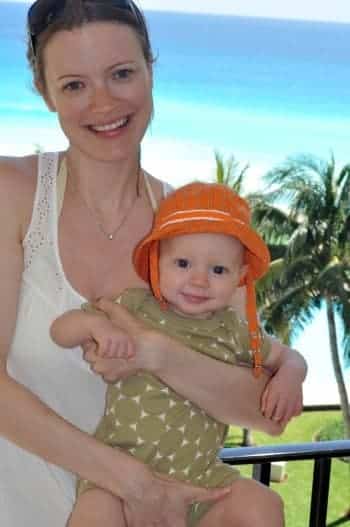
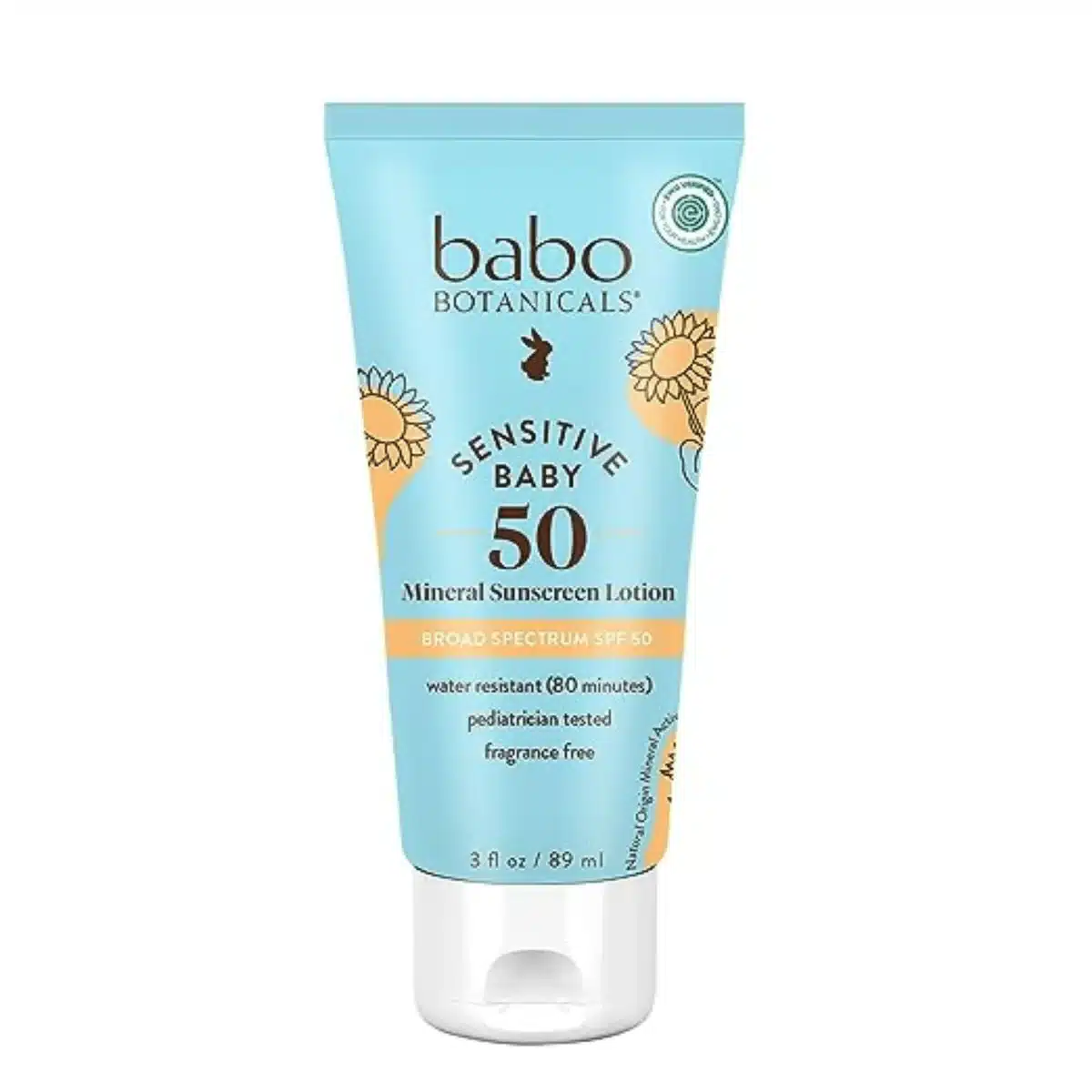
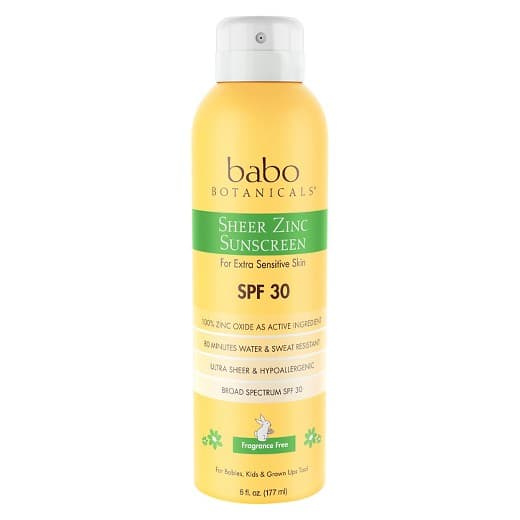
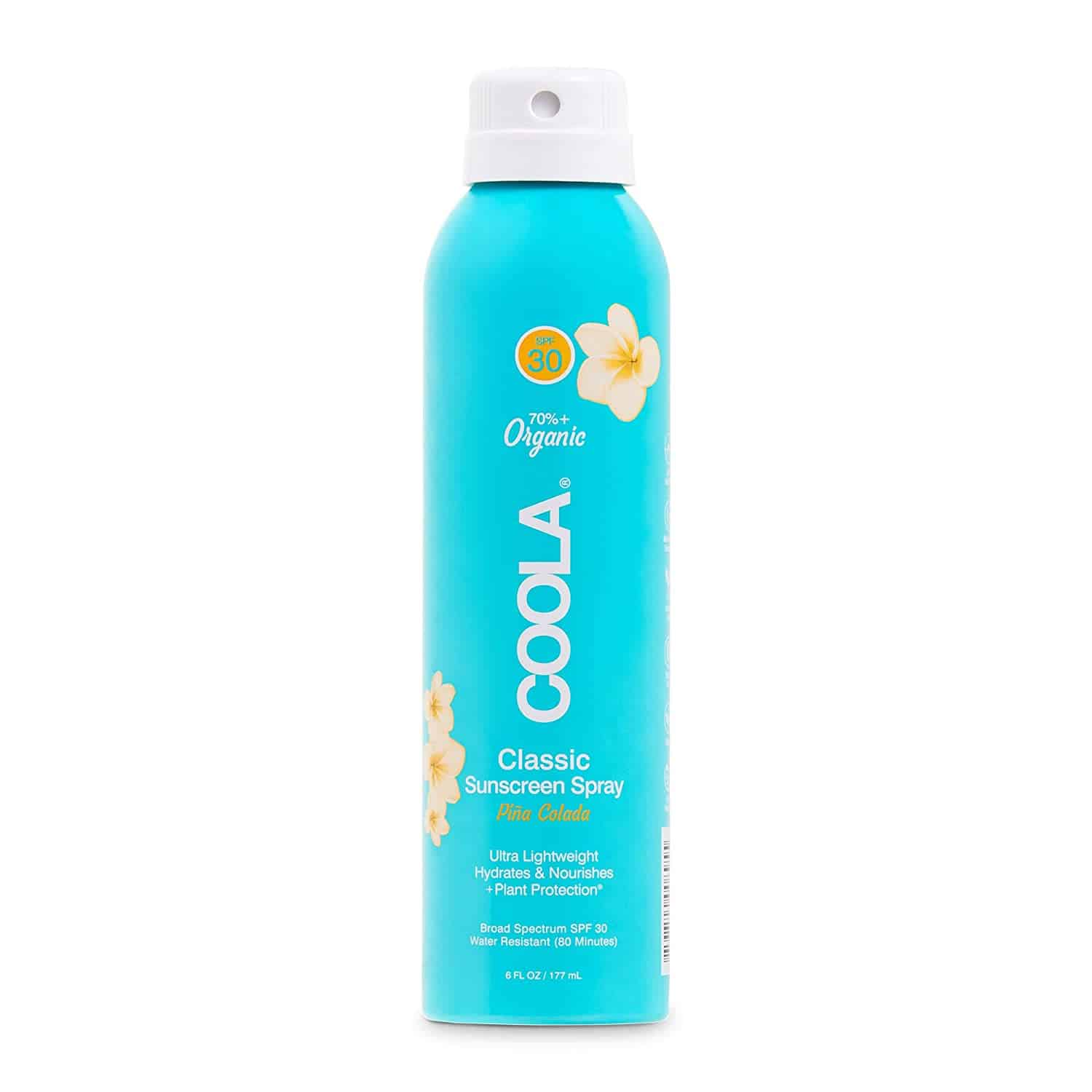
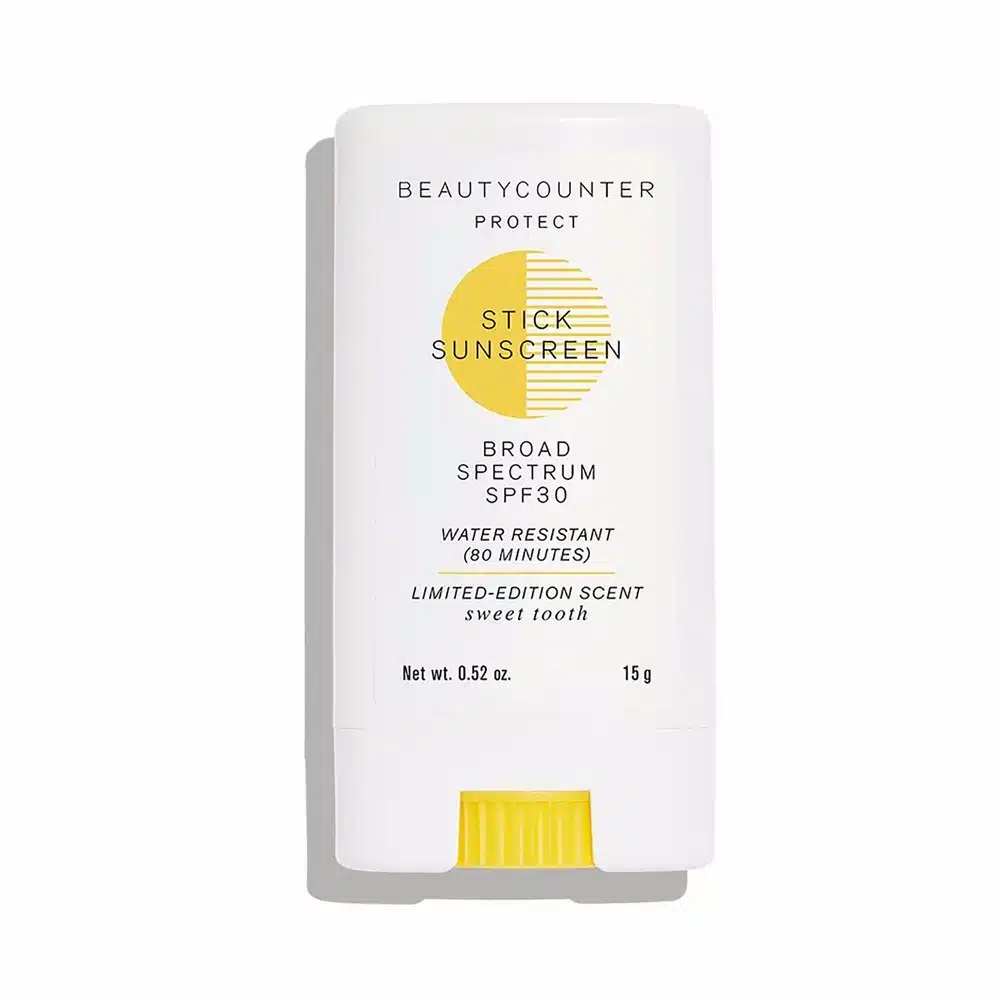
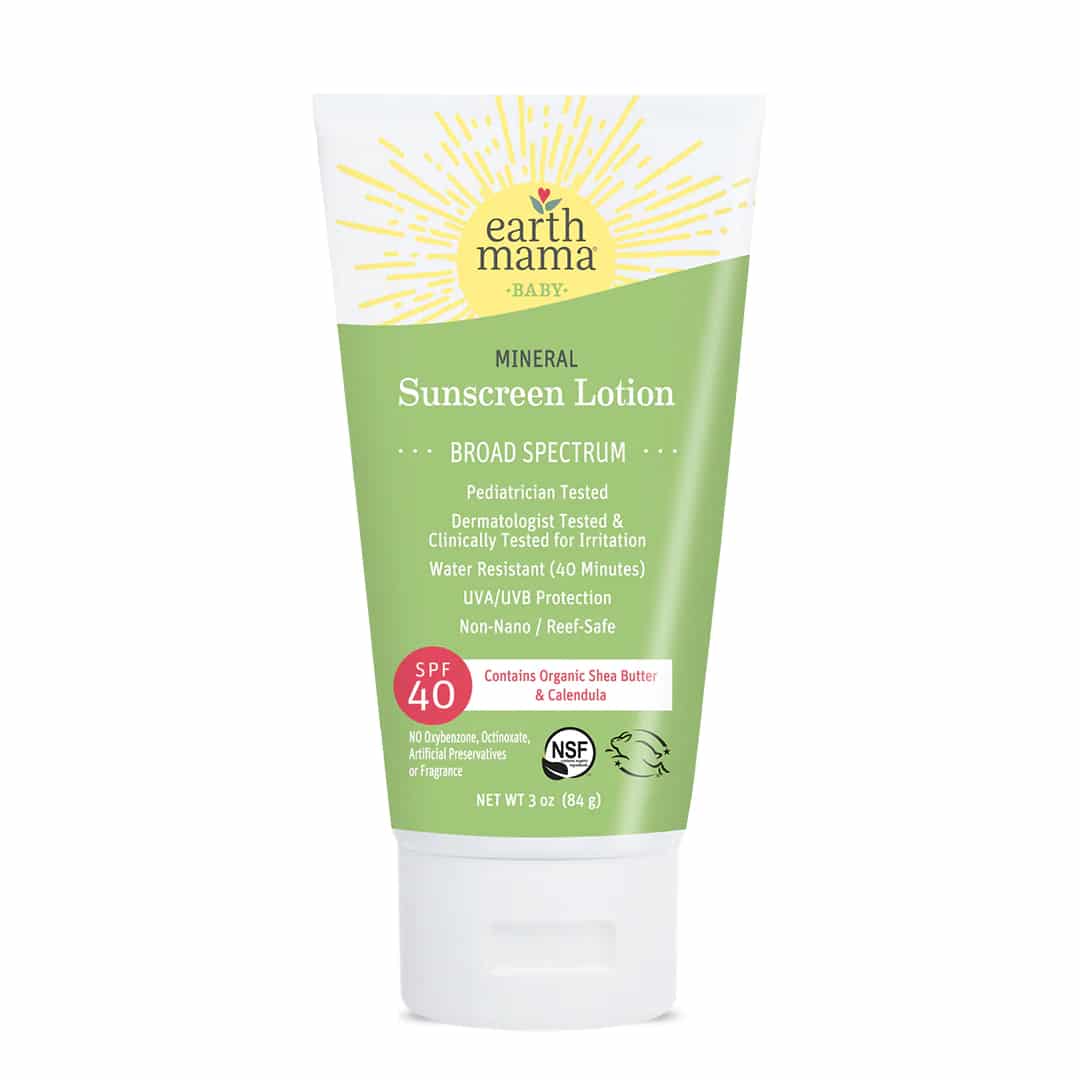
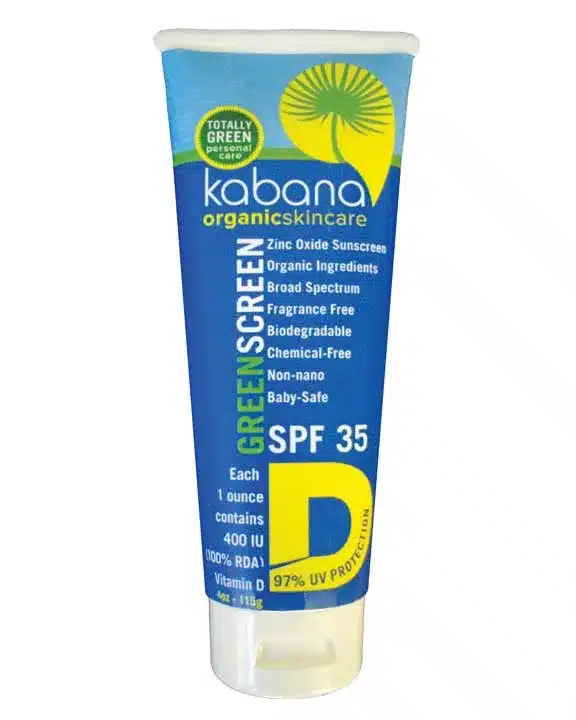
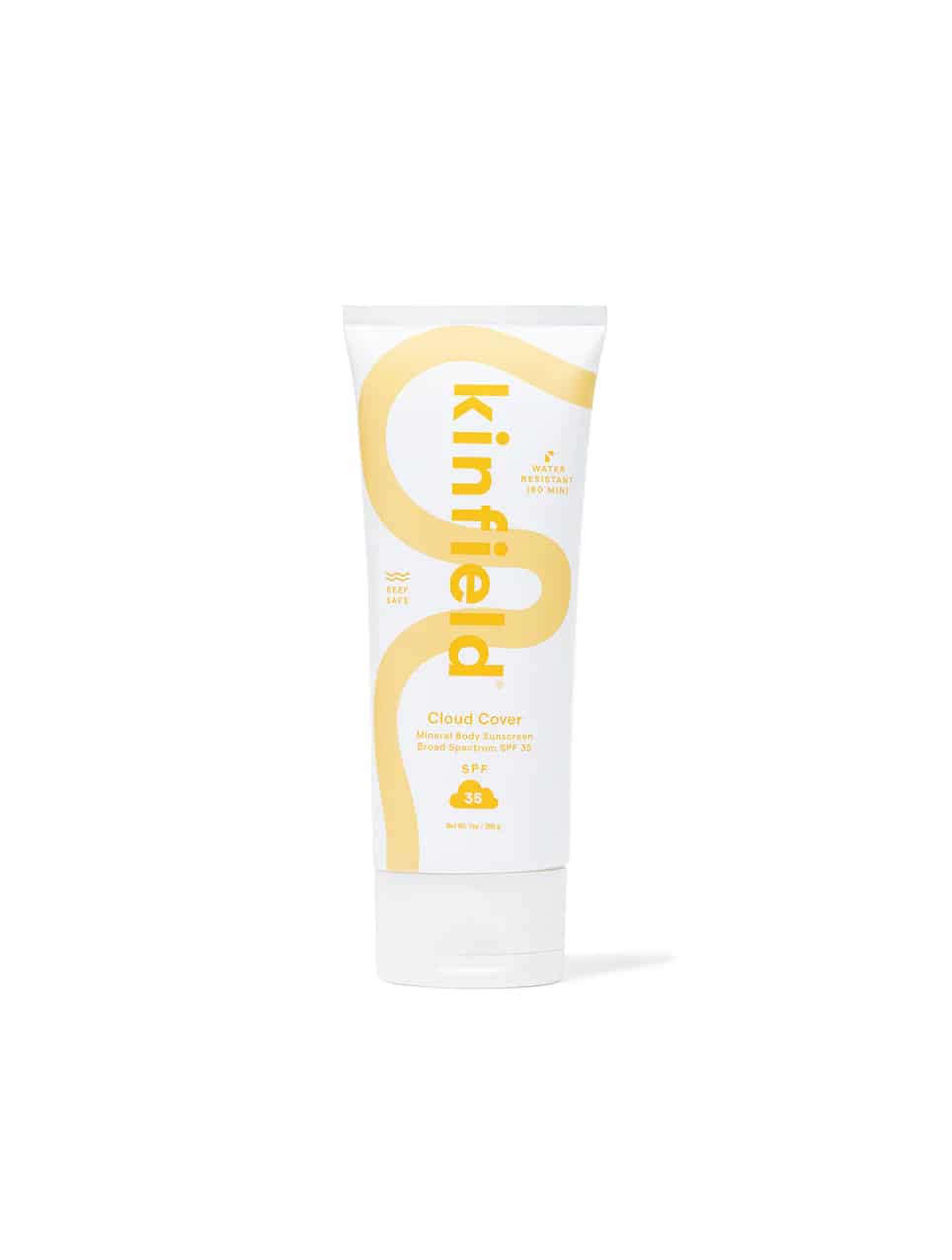

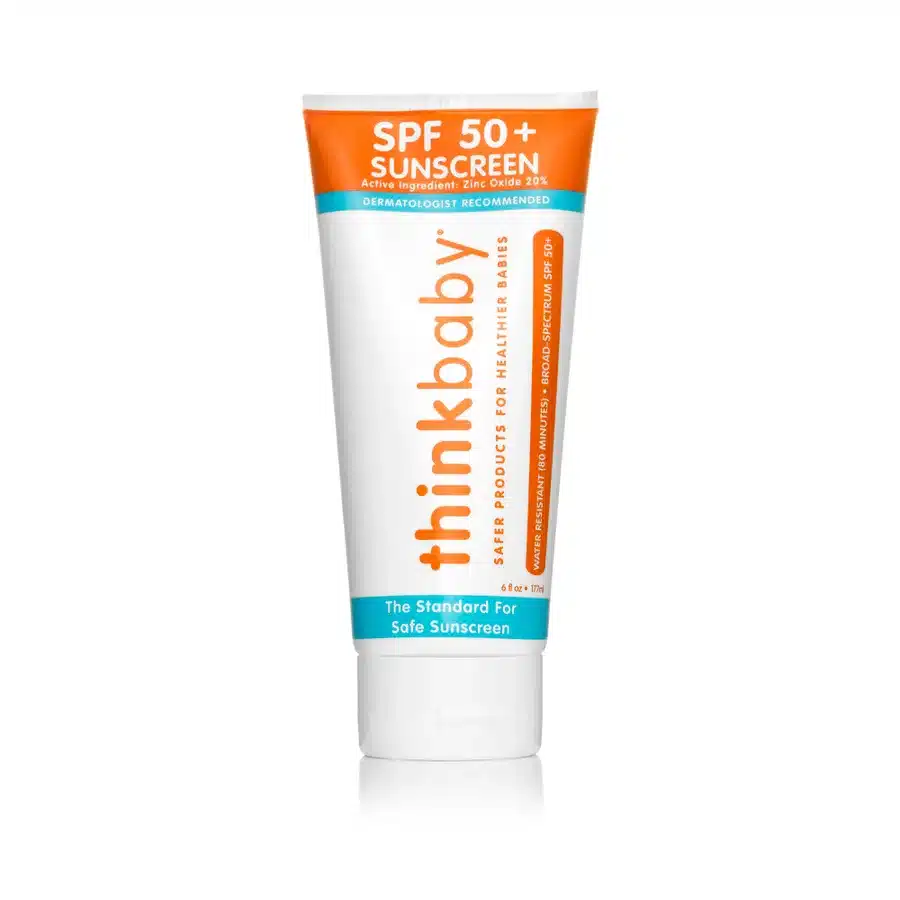
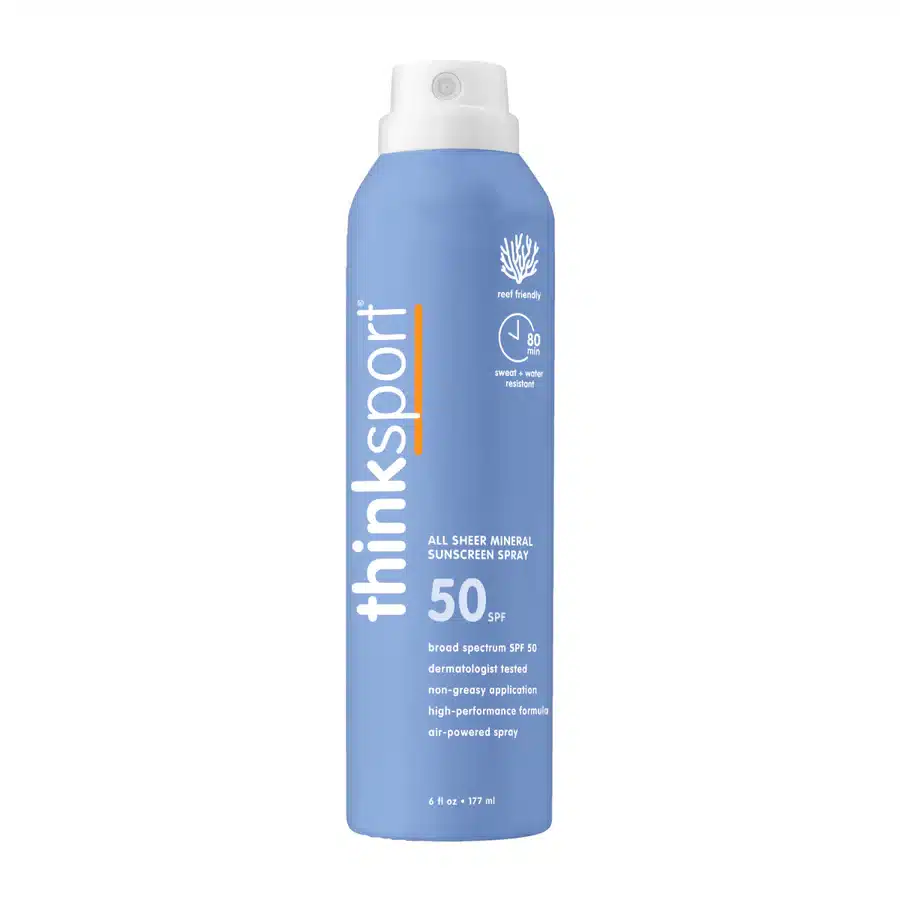
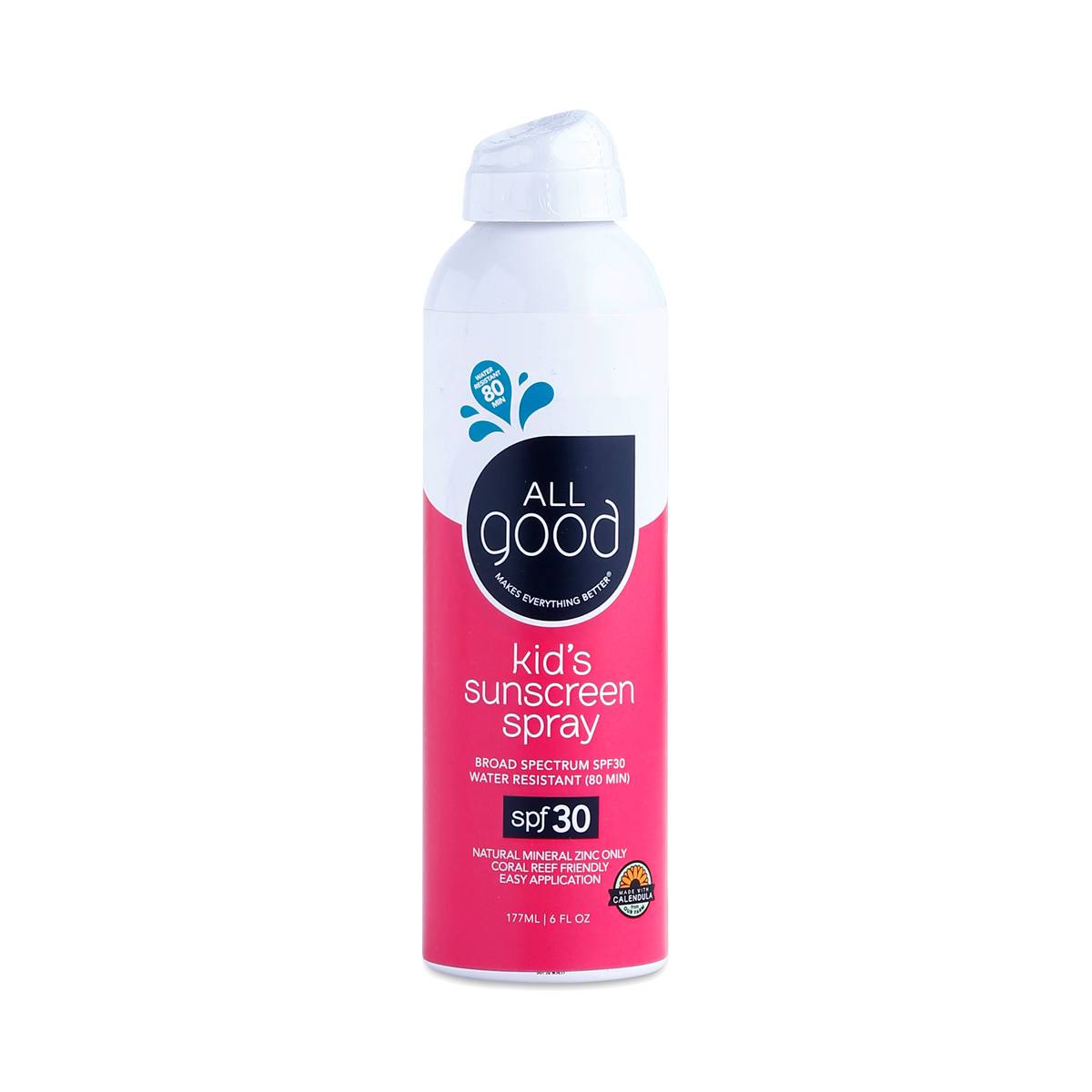
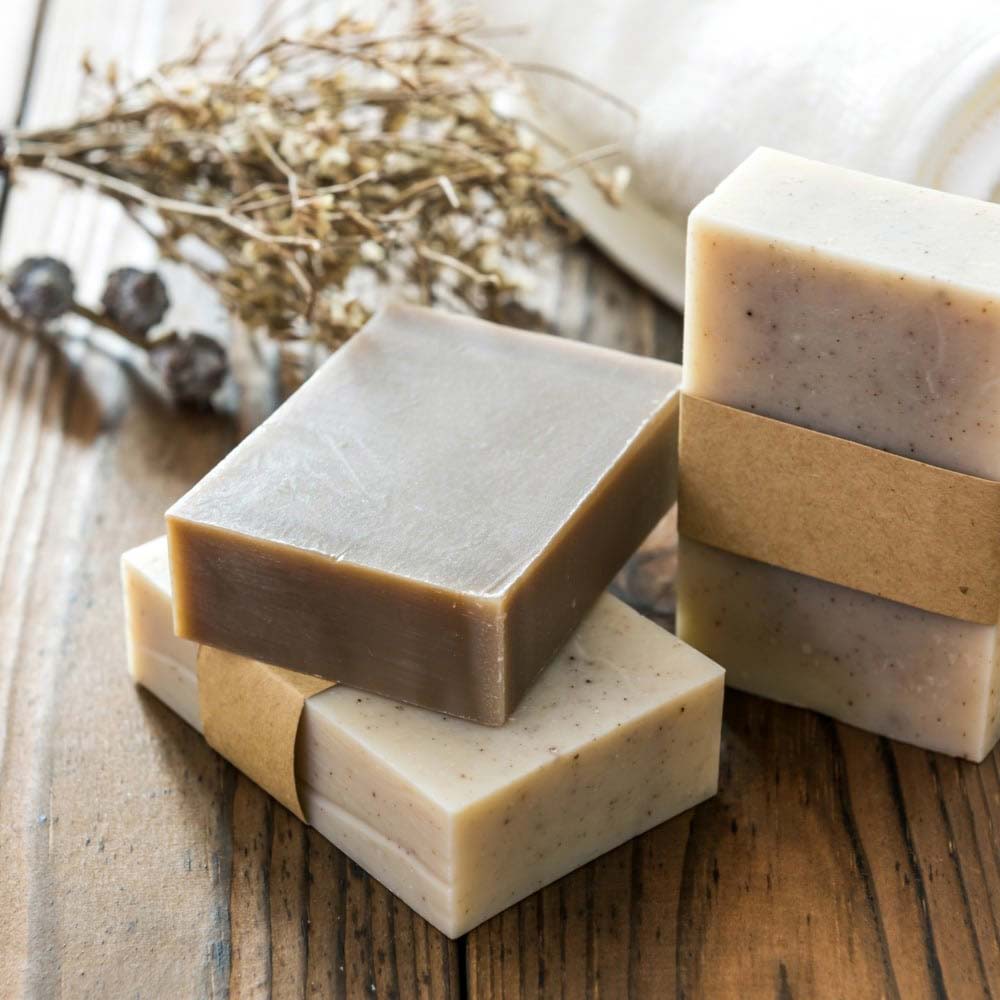

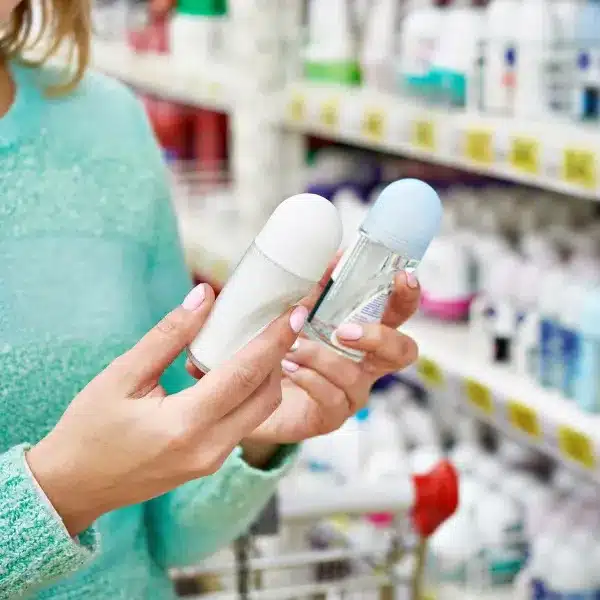

Leave a Reply
You must be logged in to post a comment.